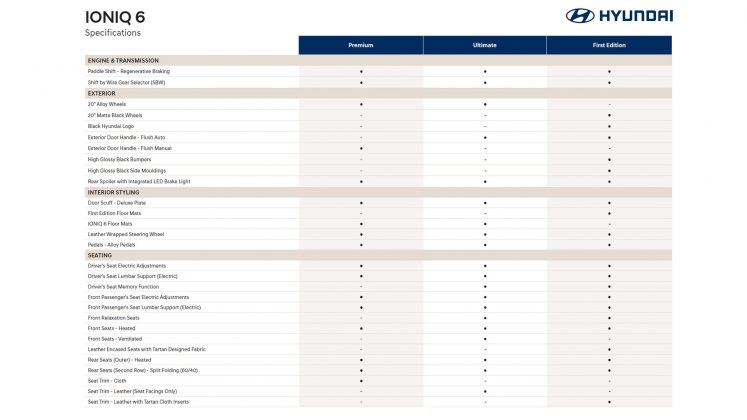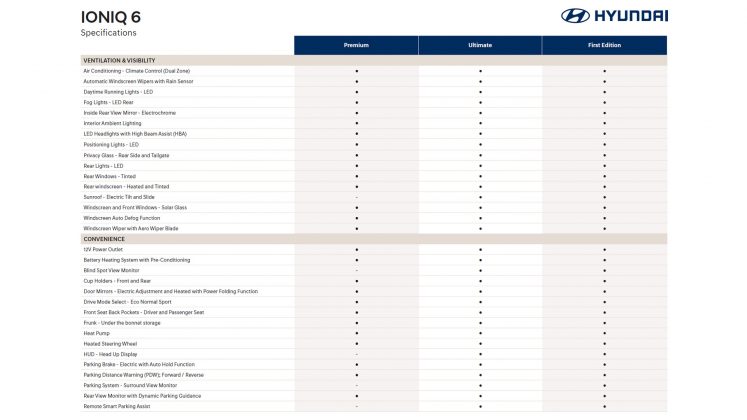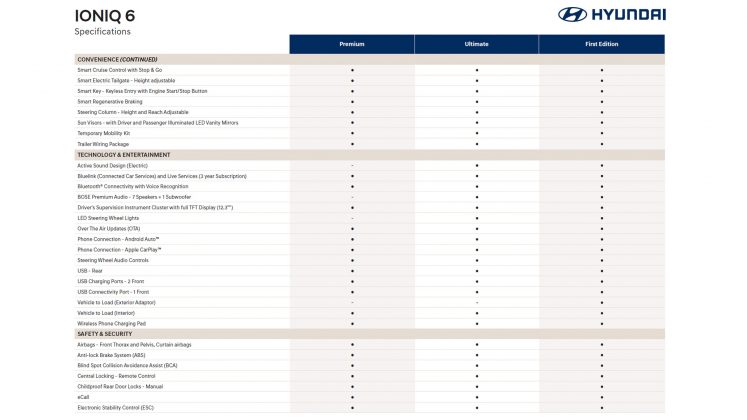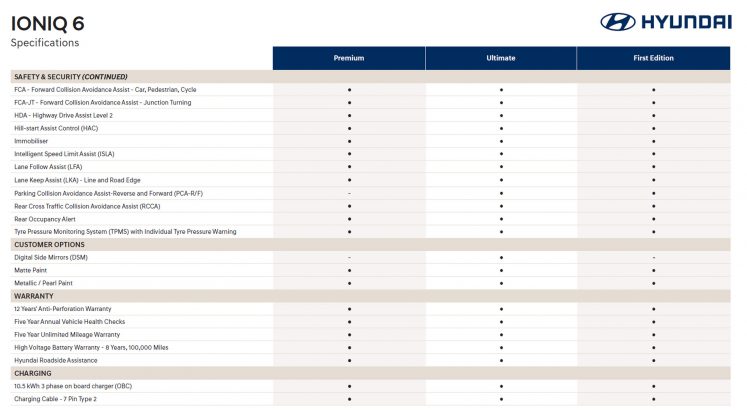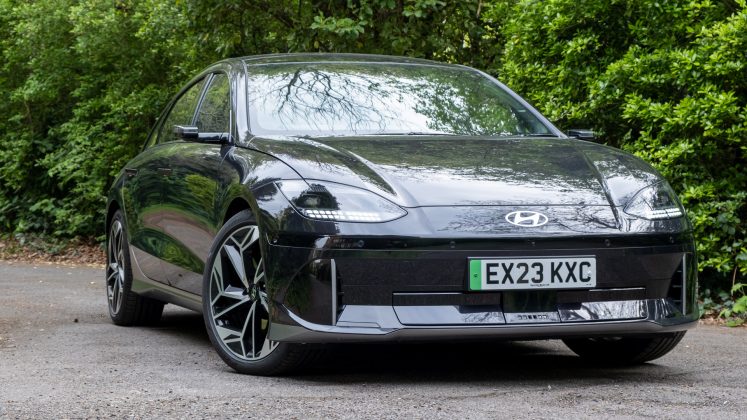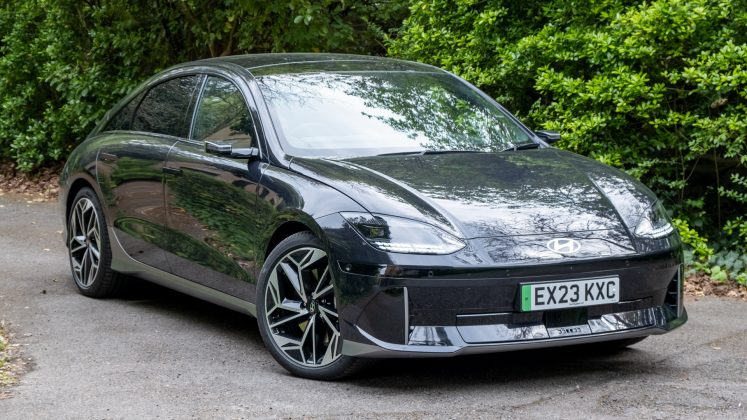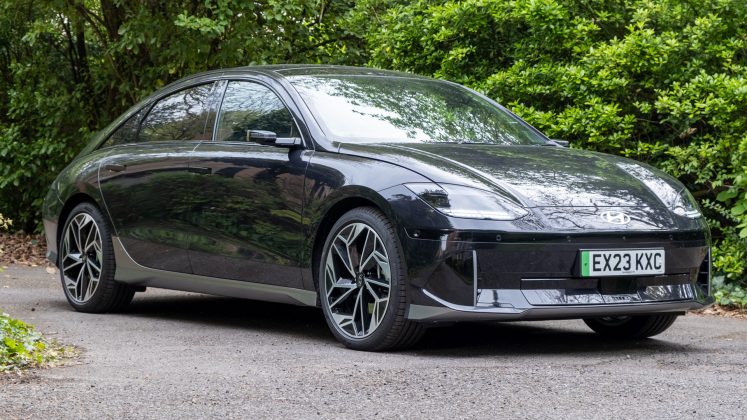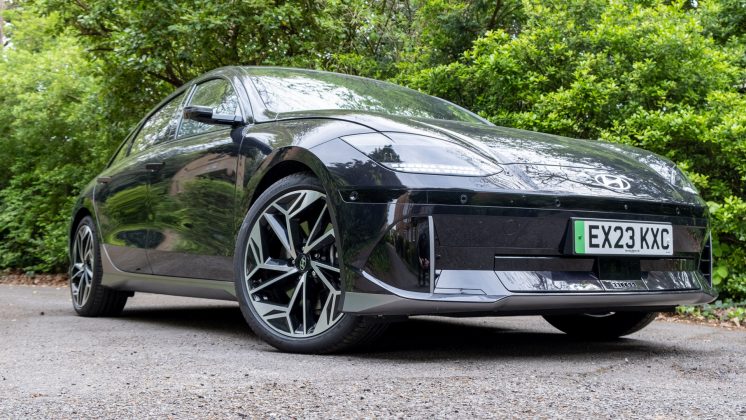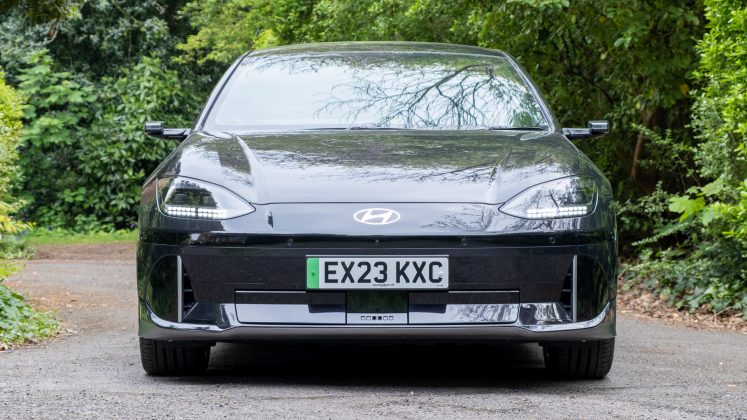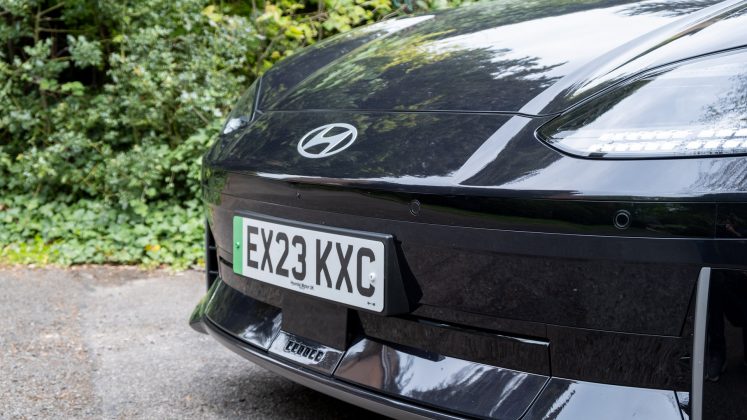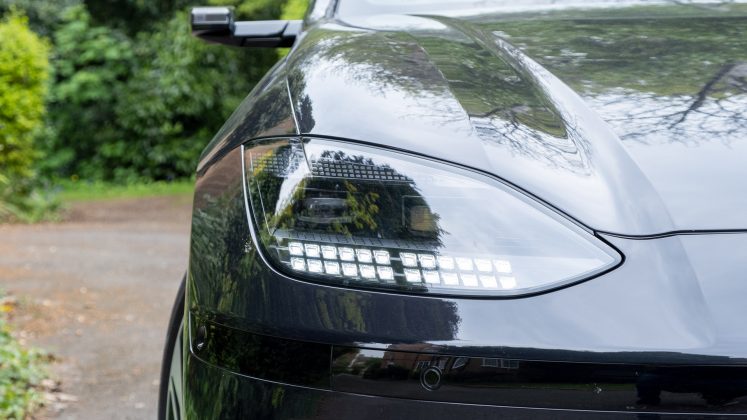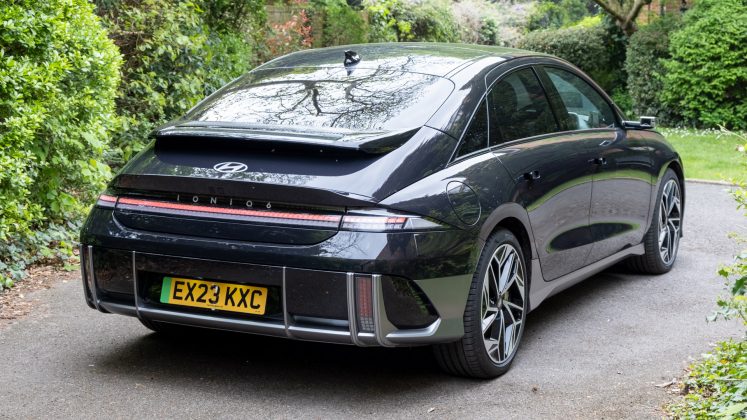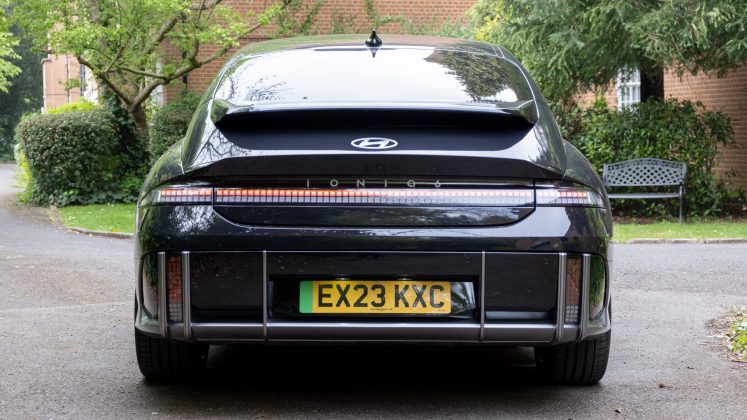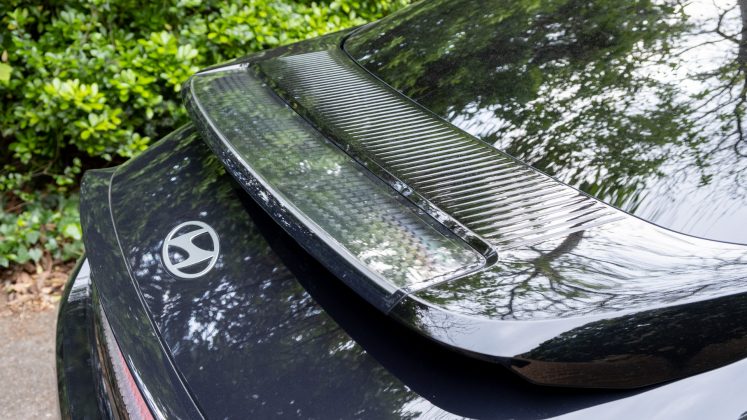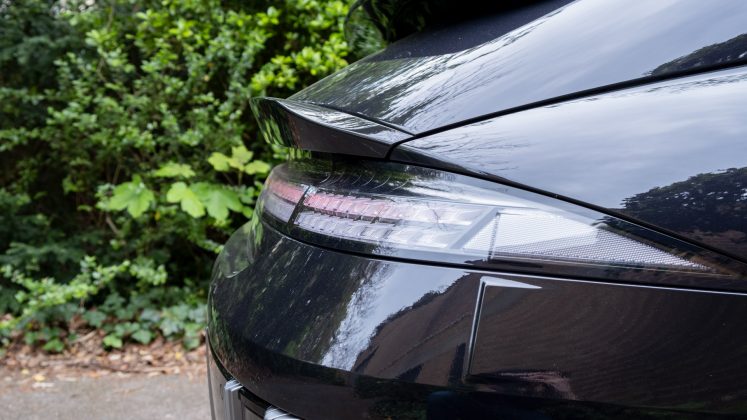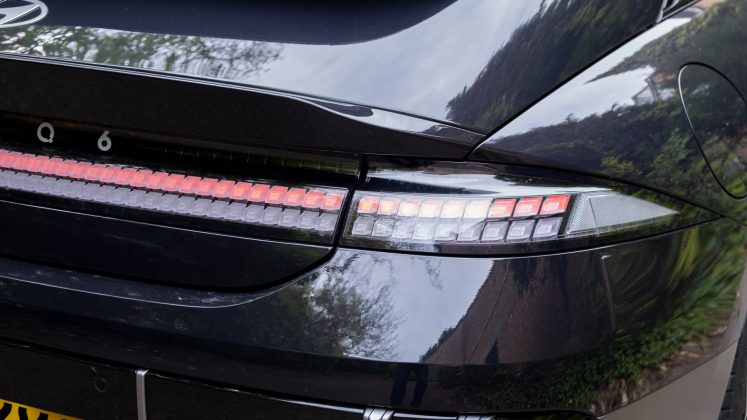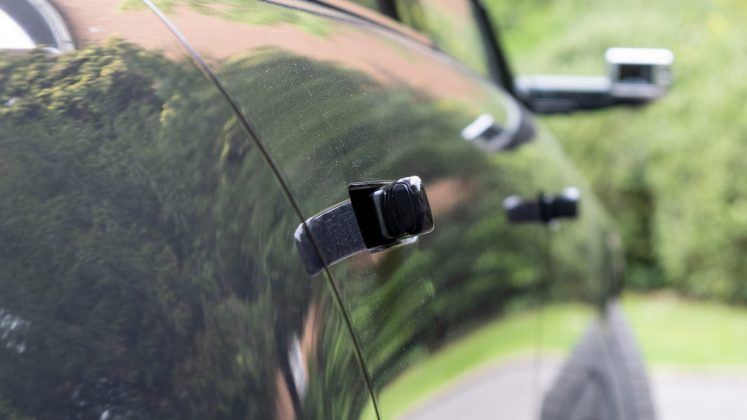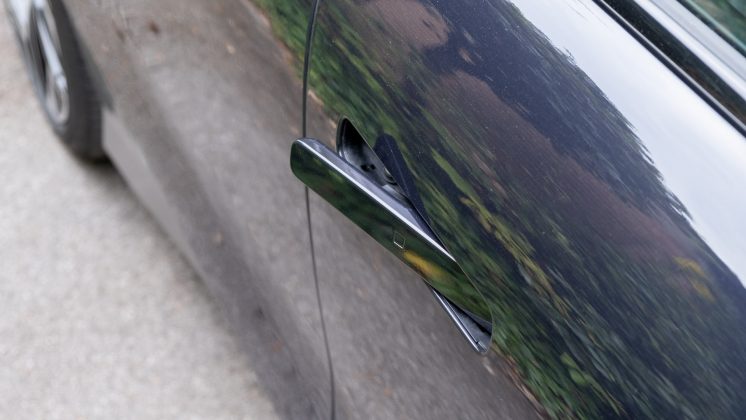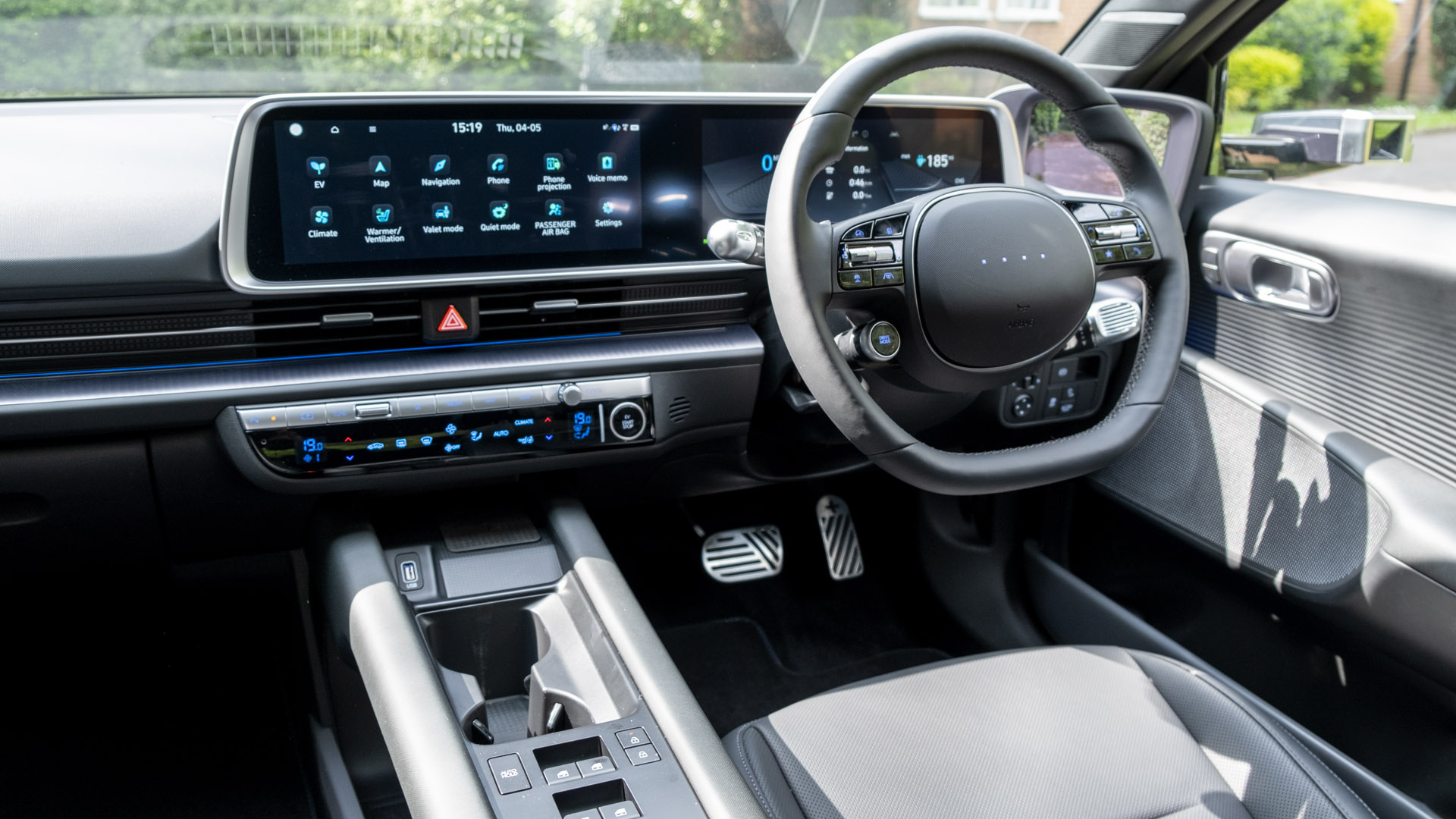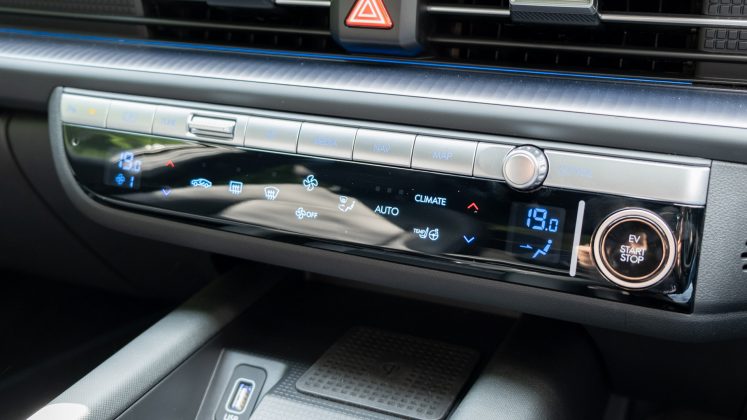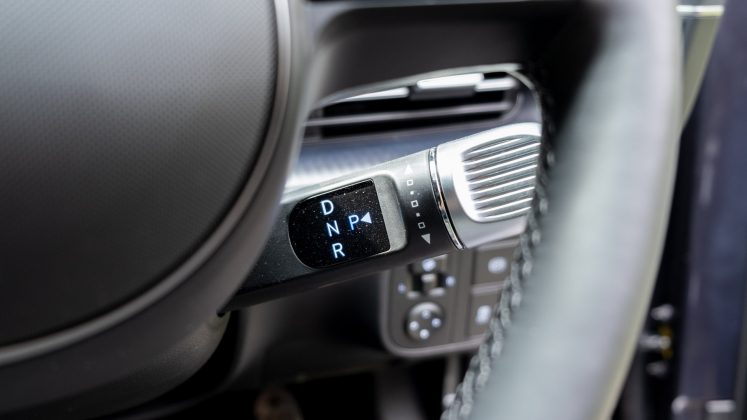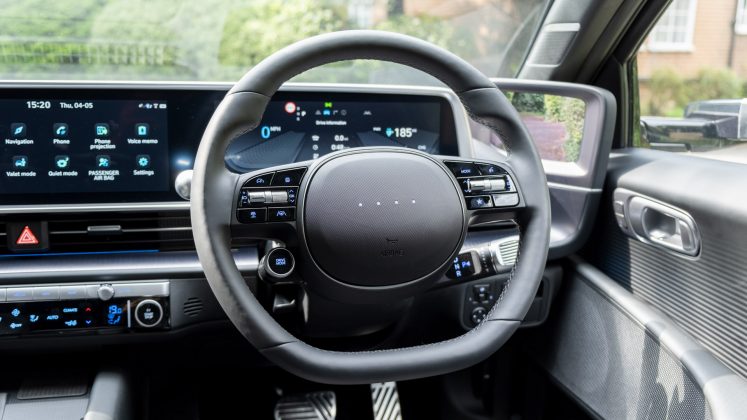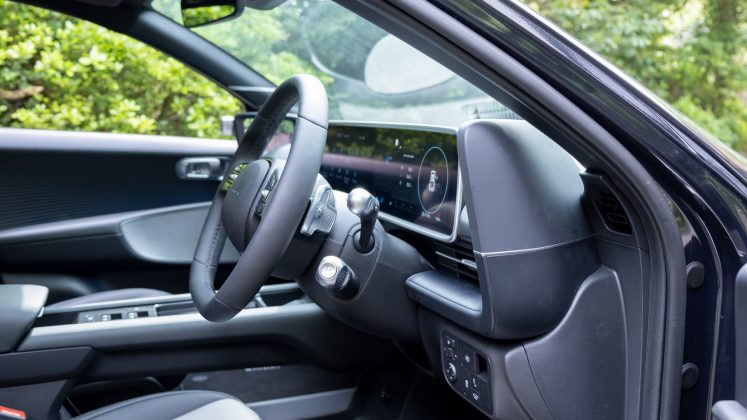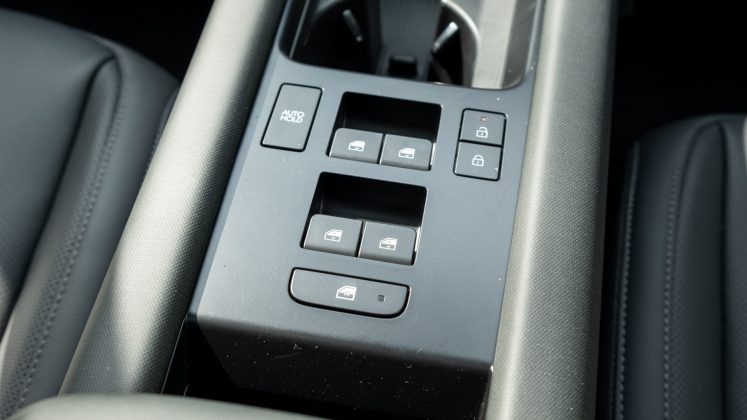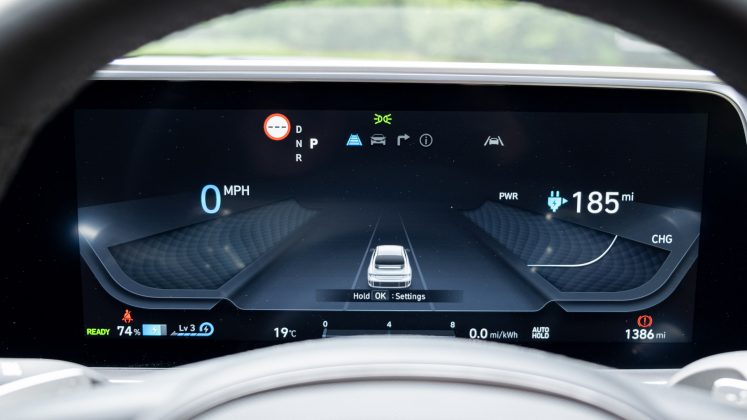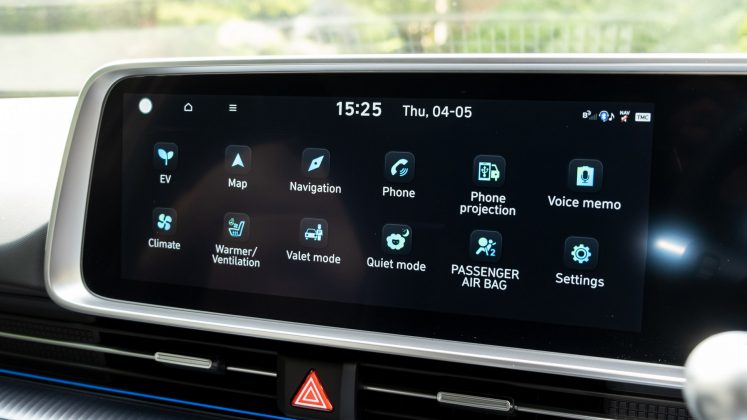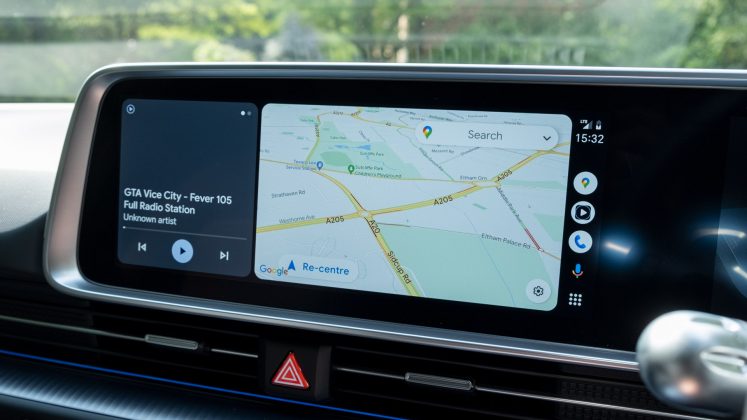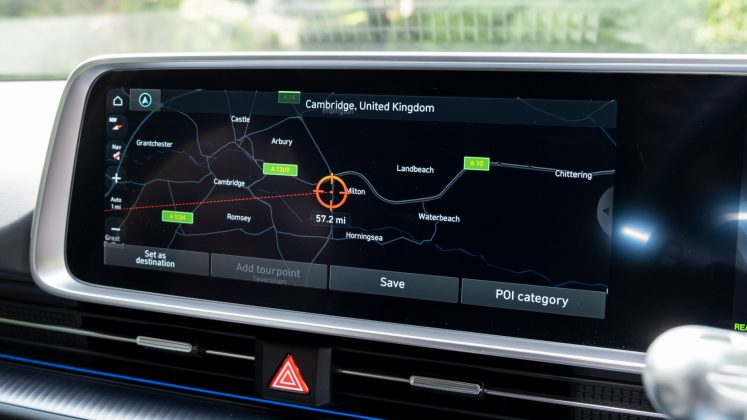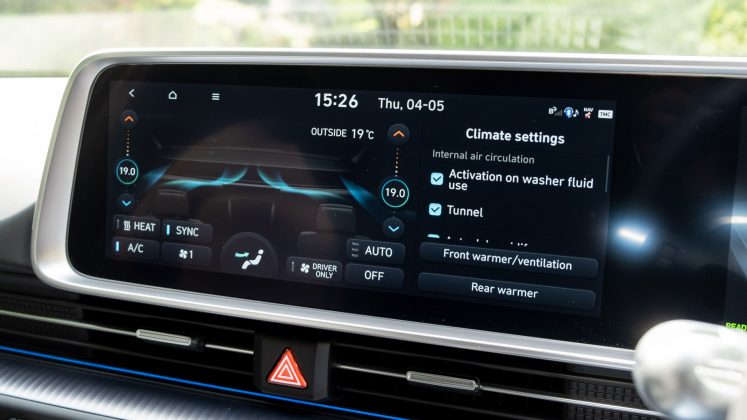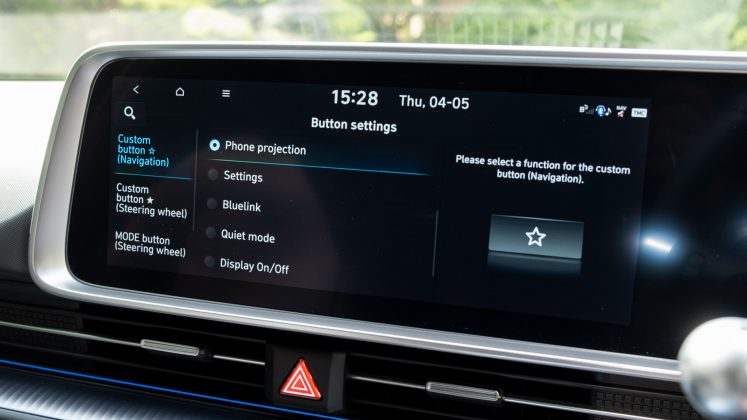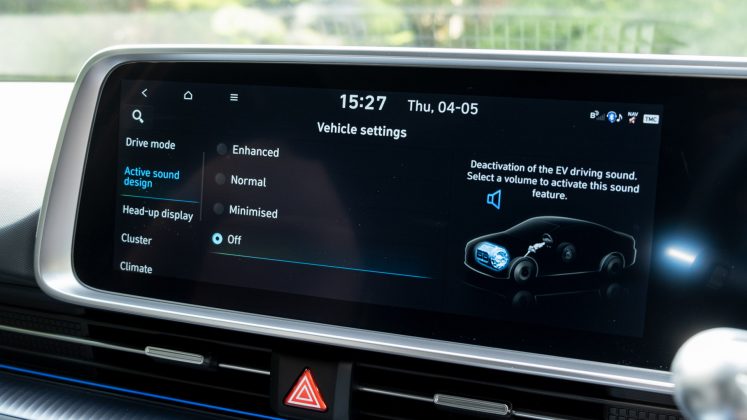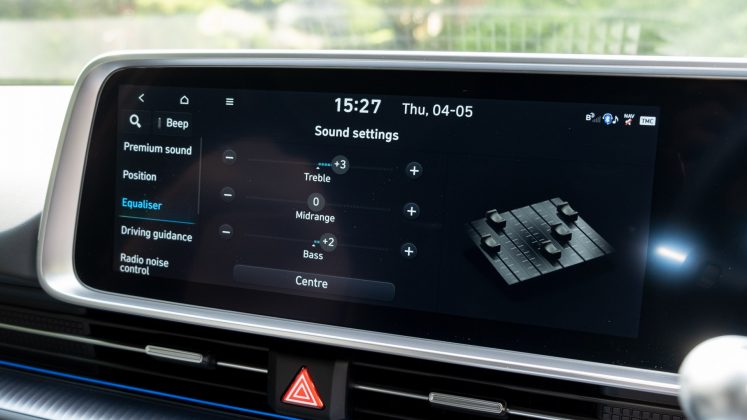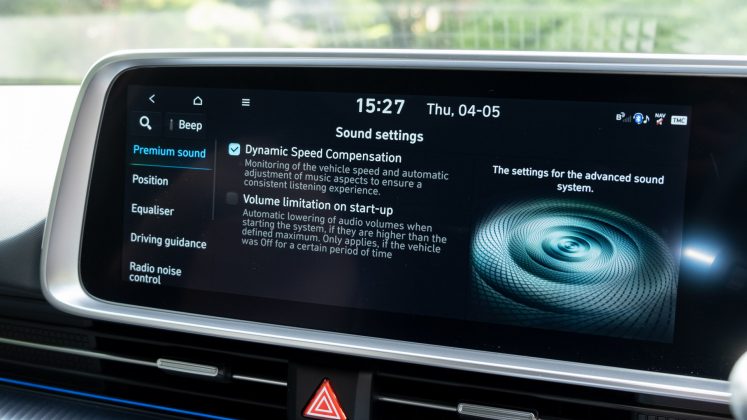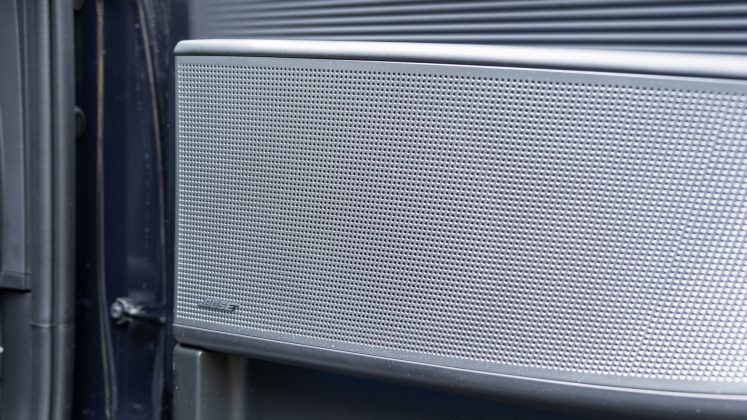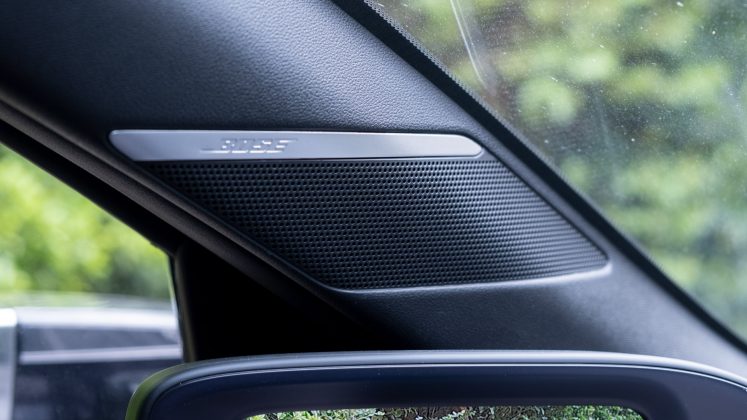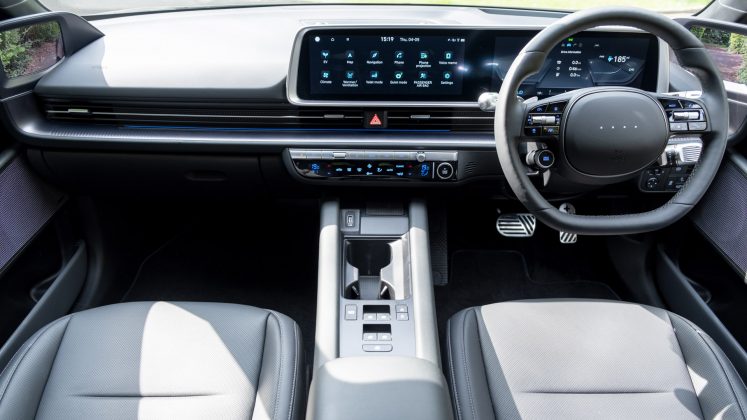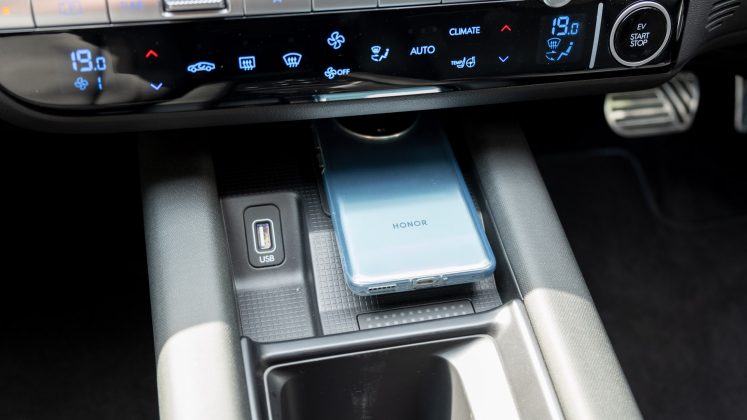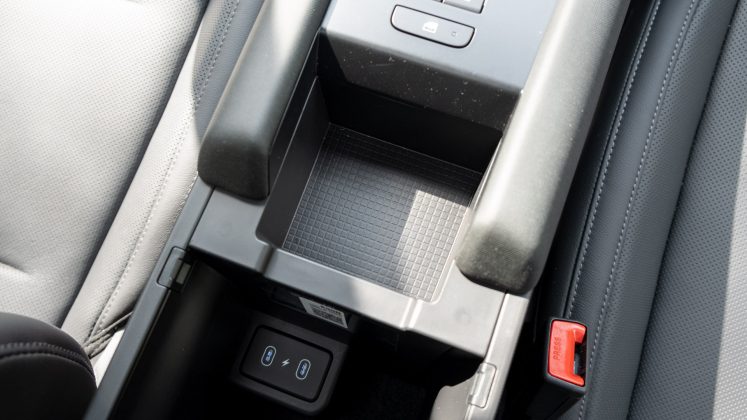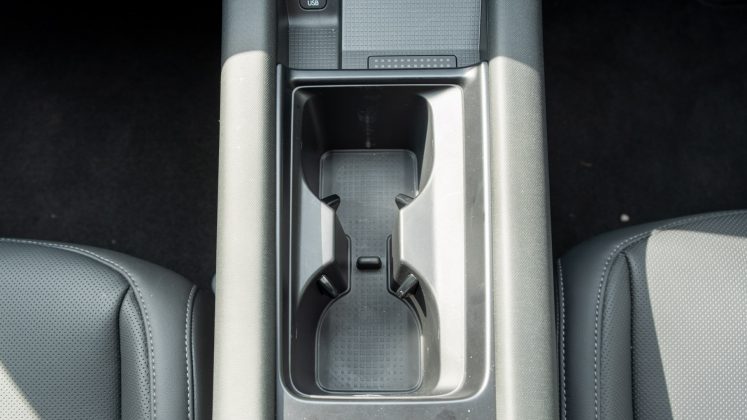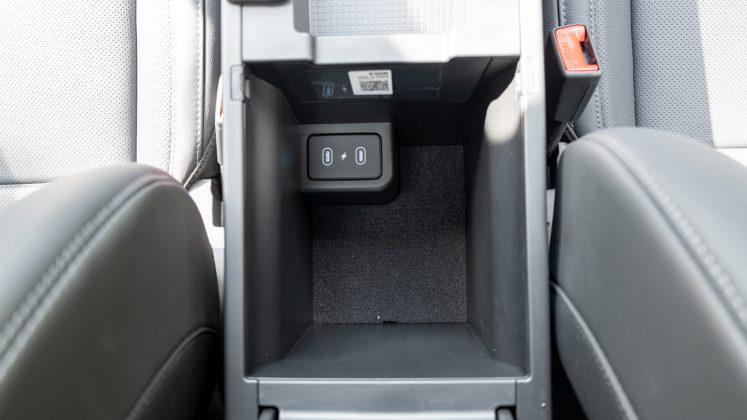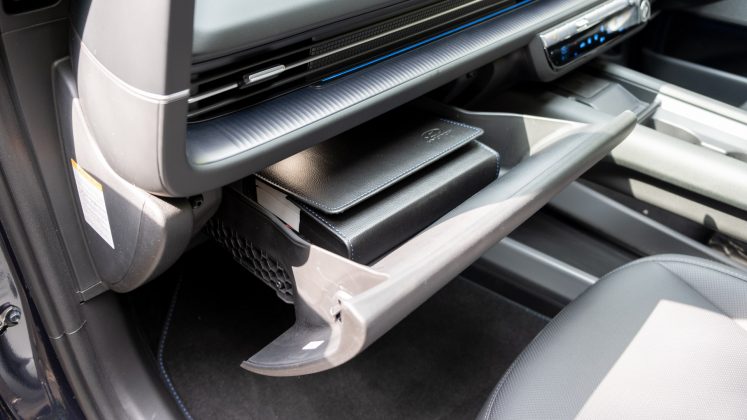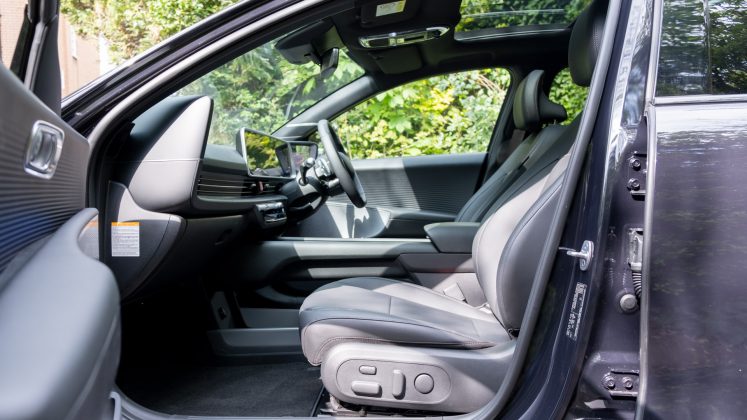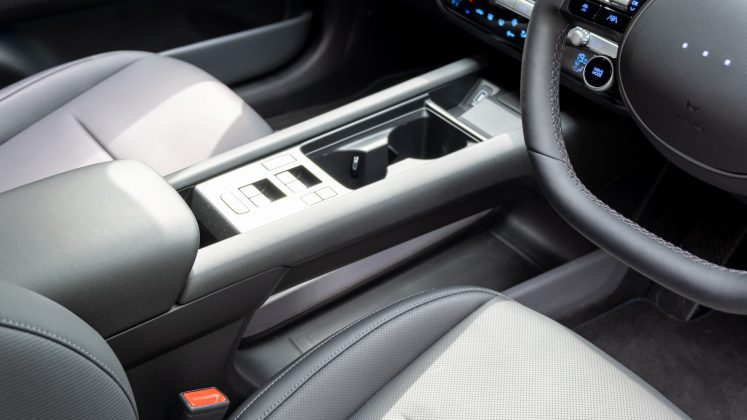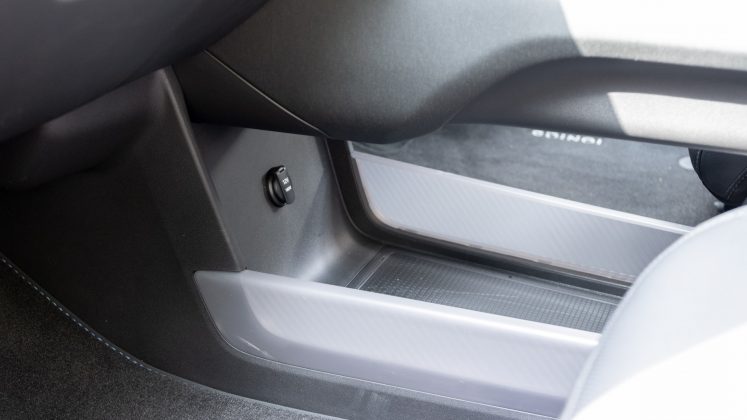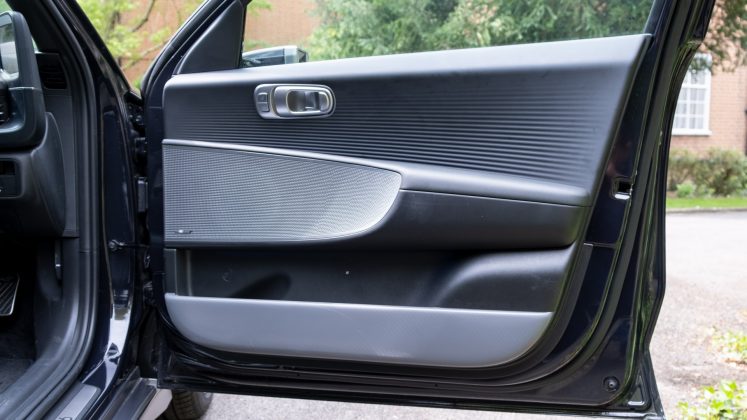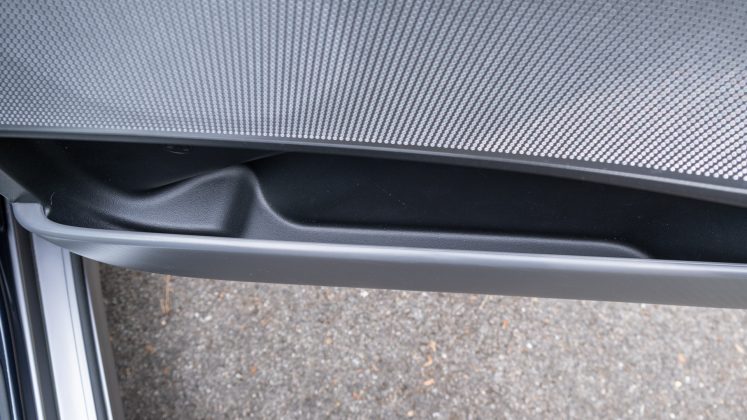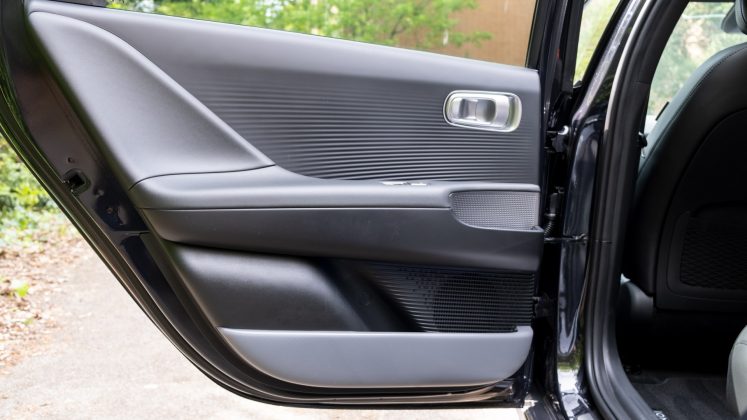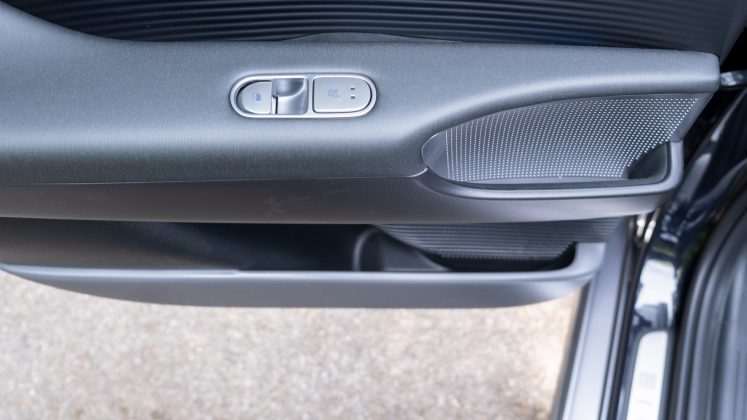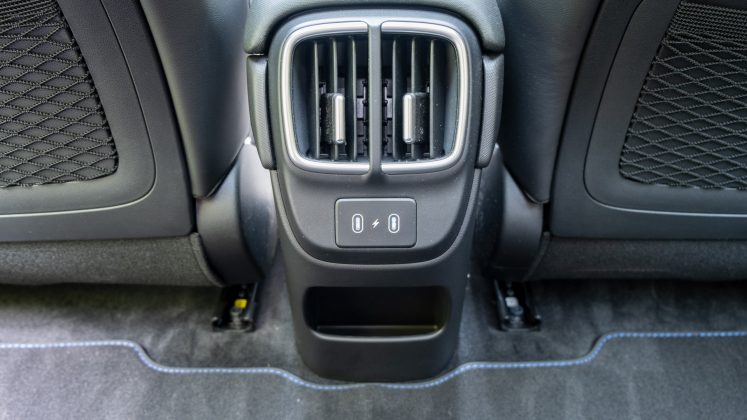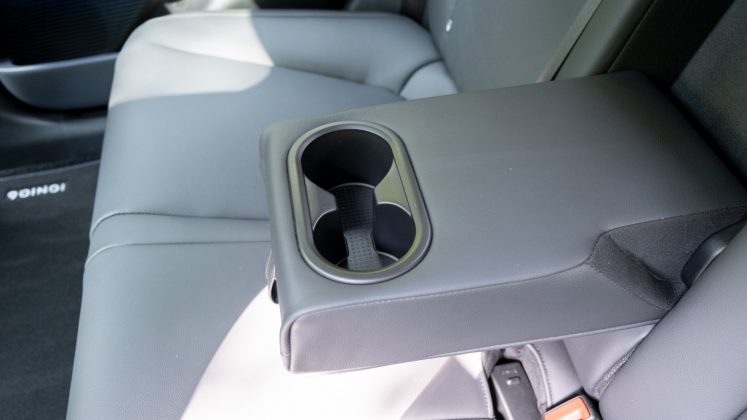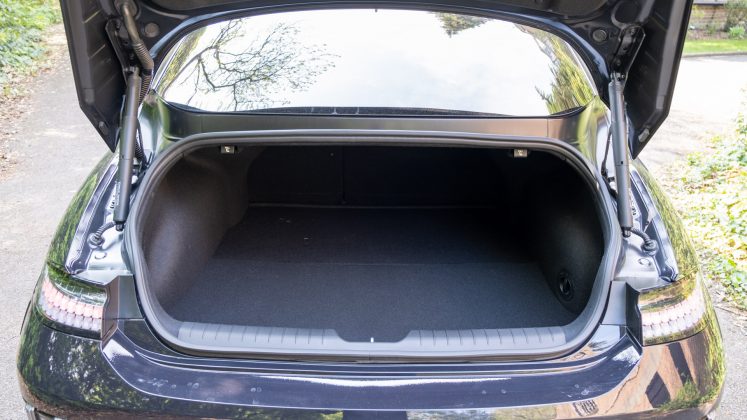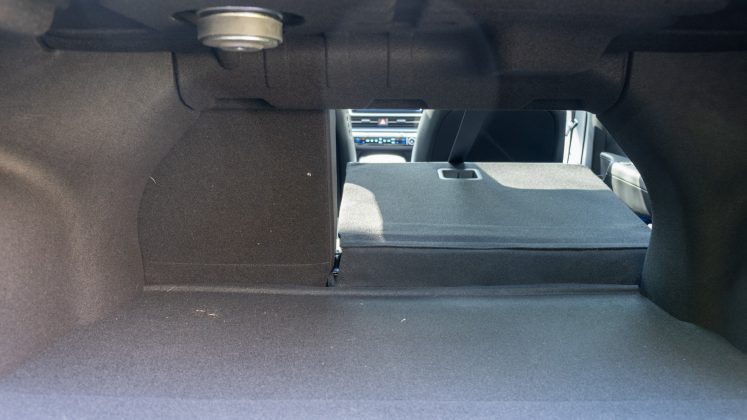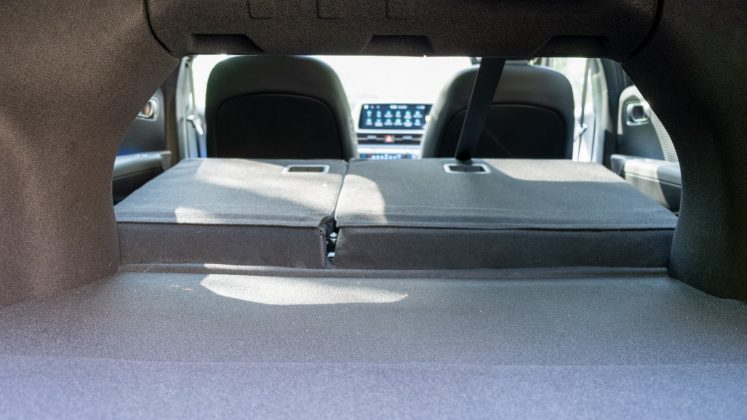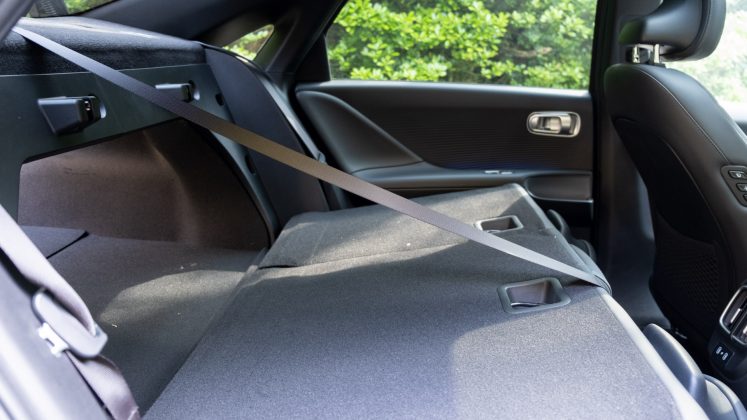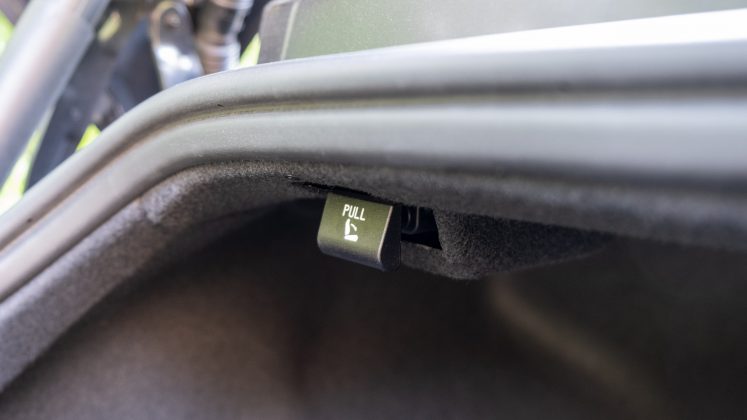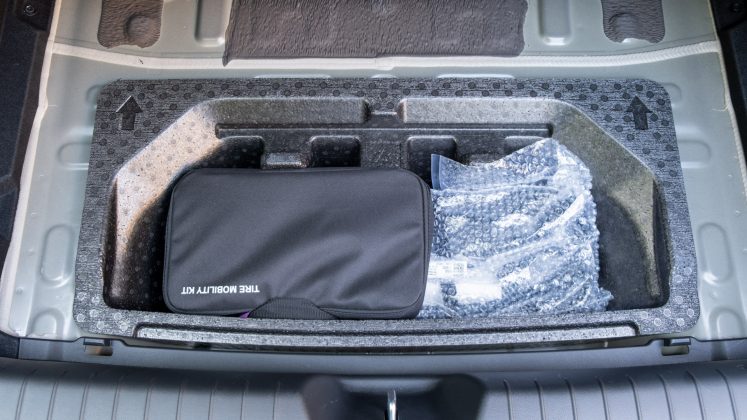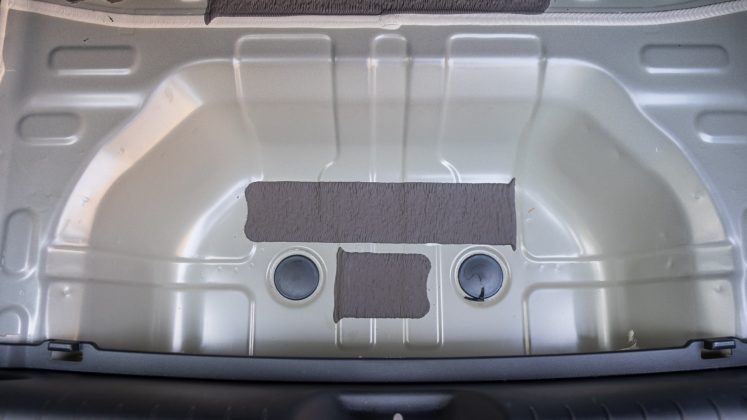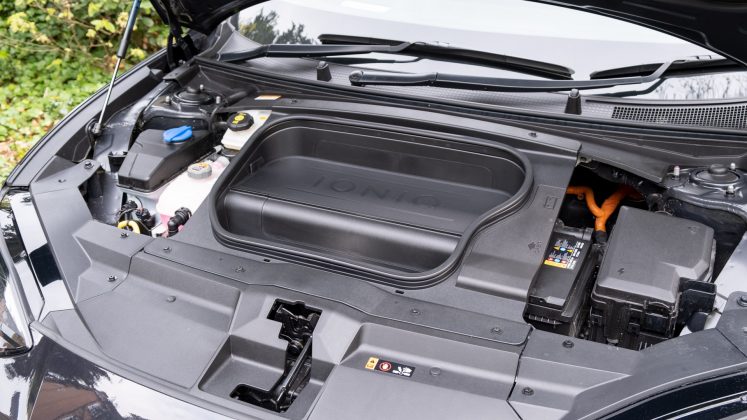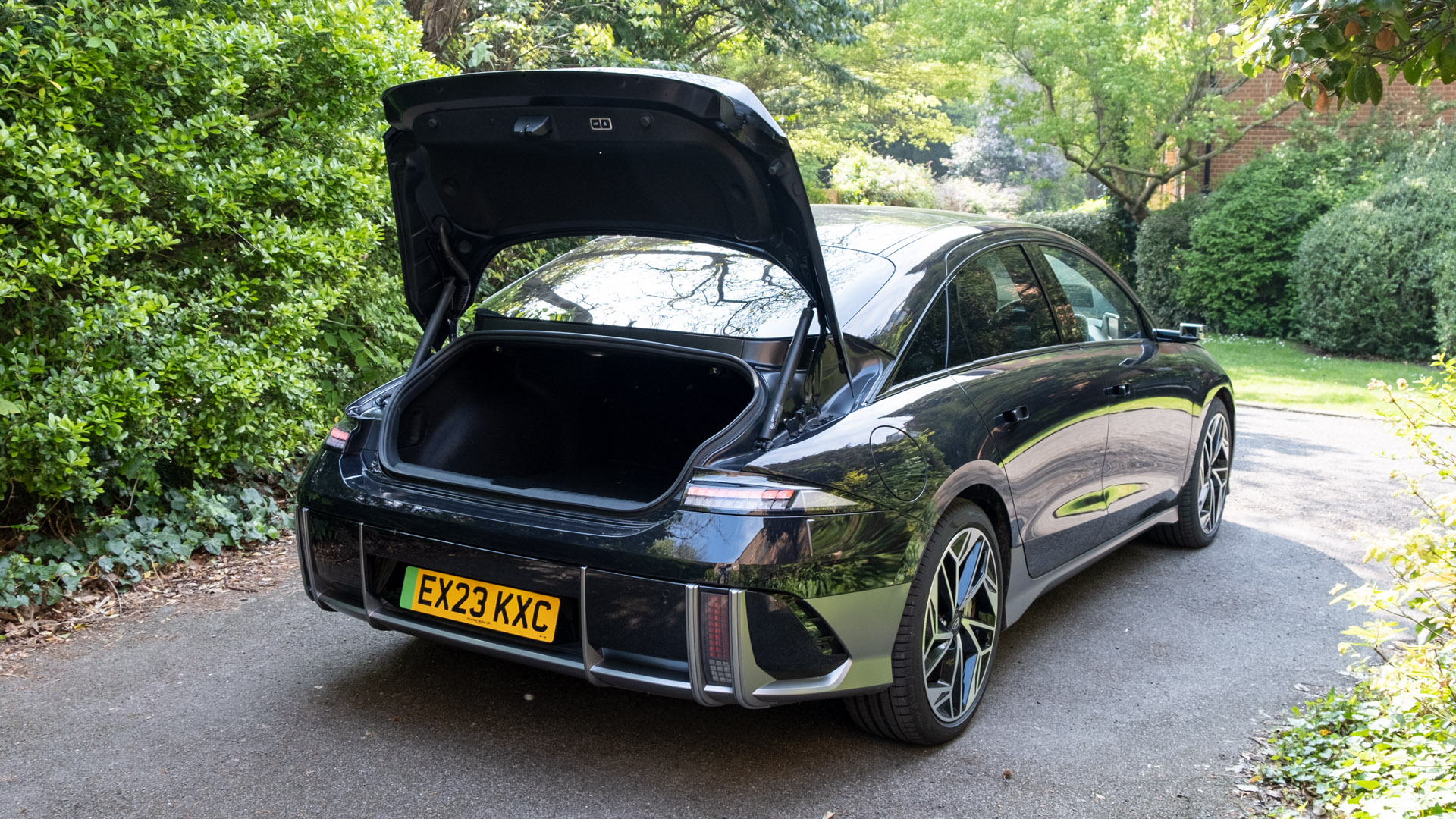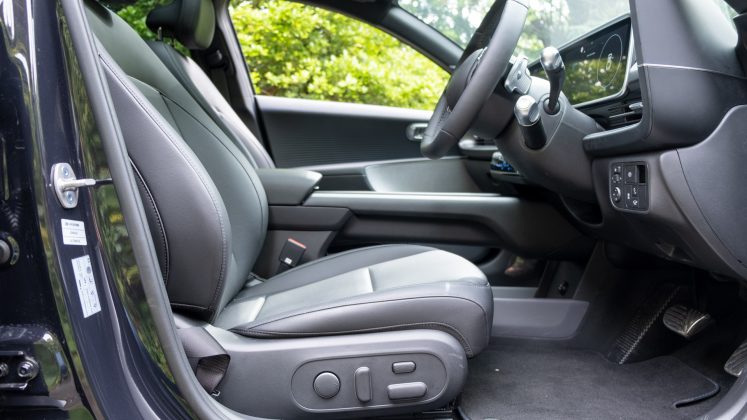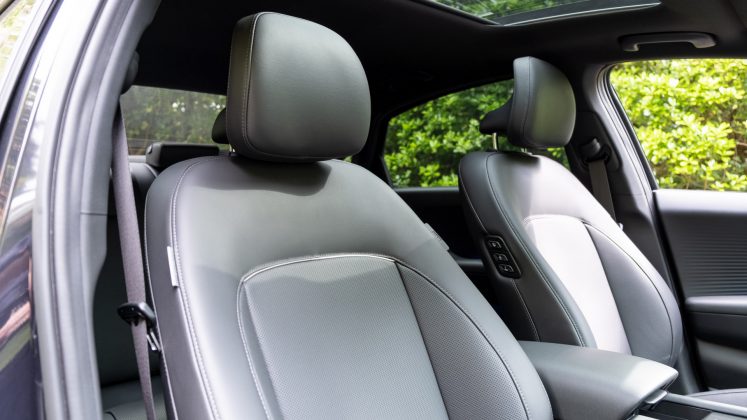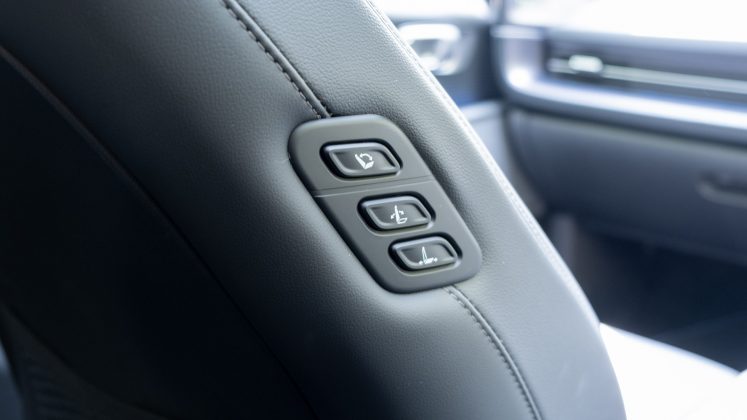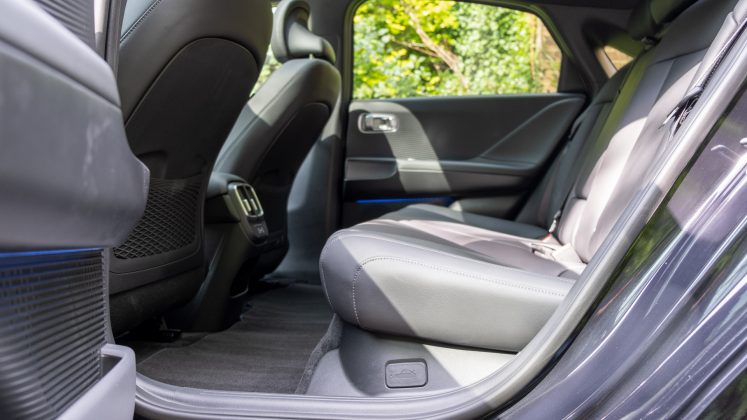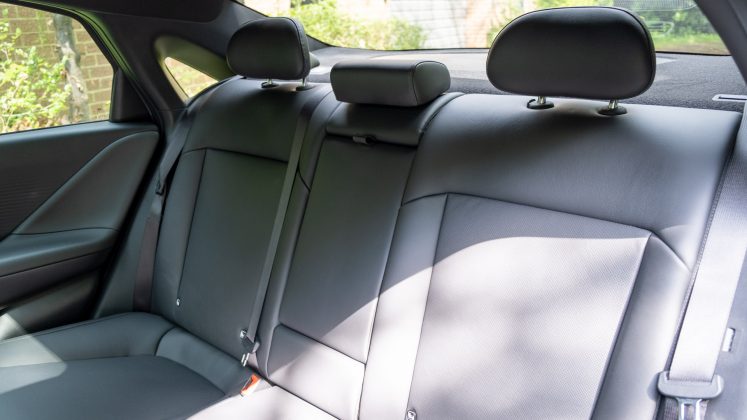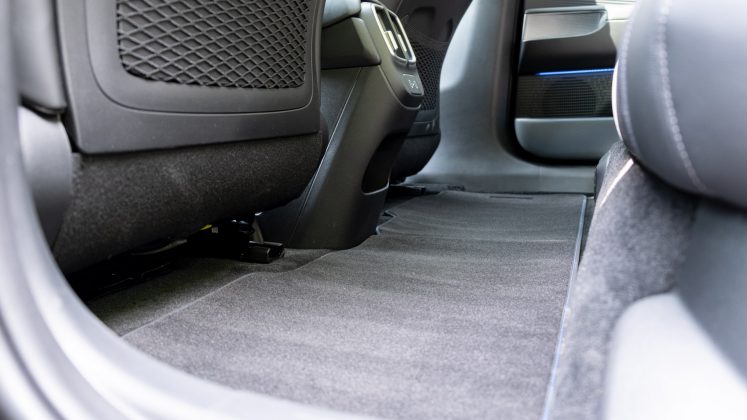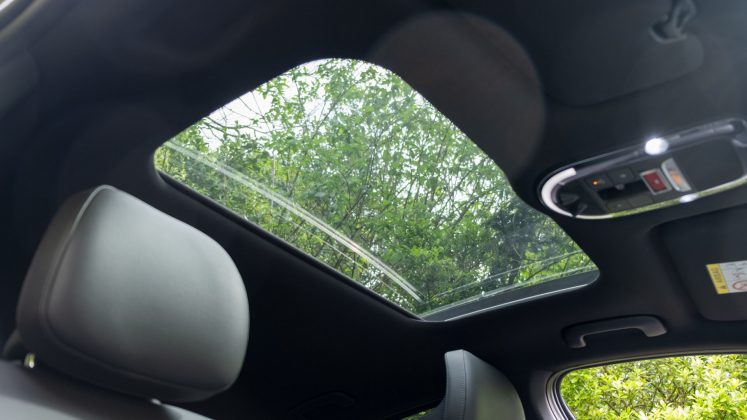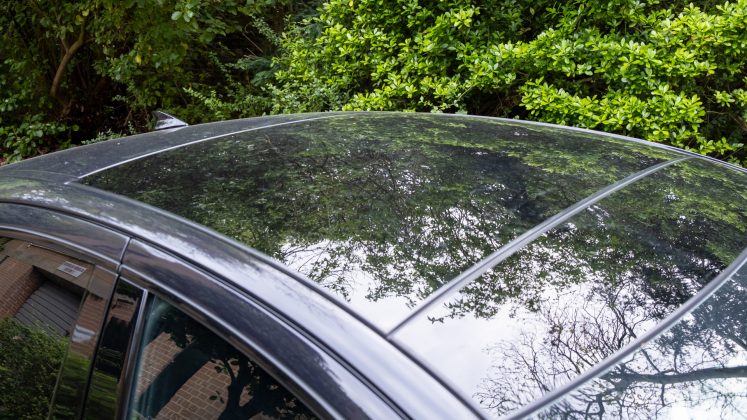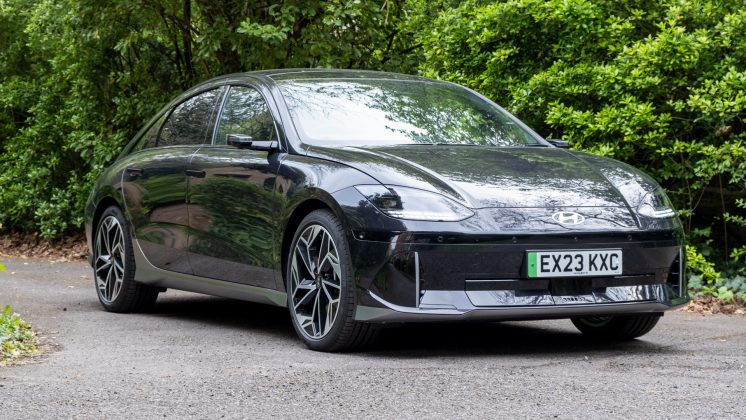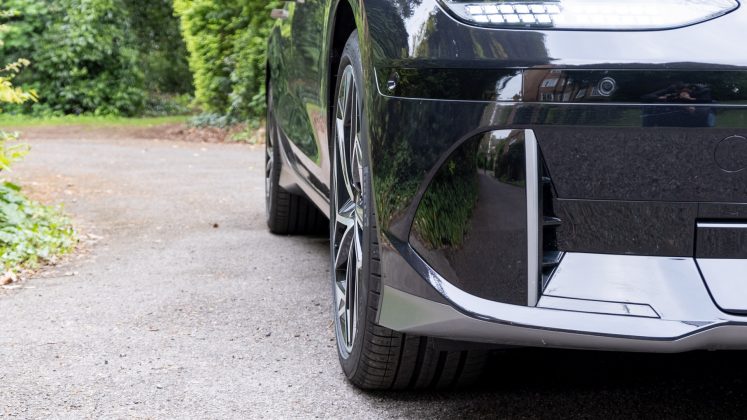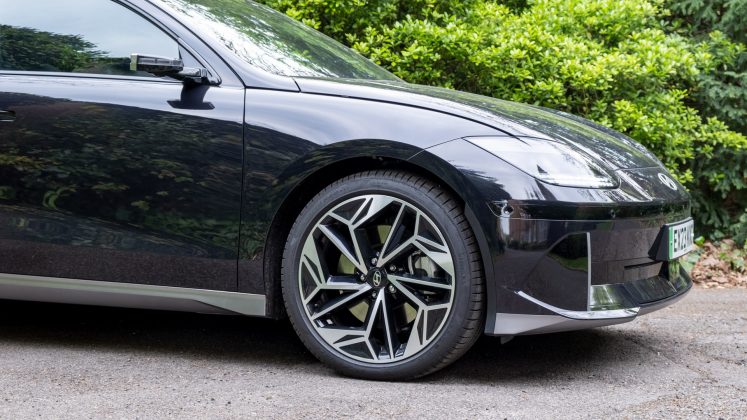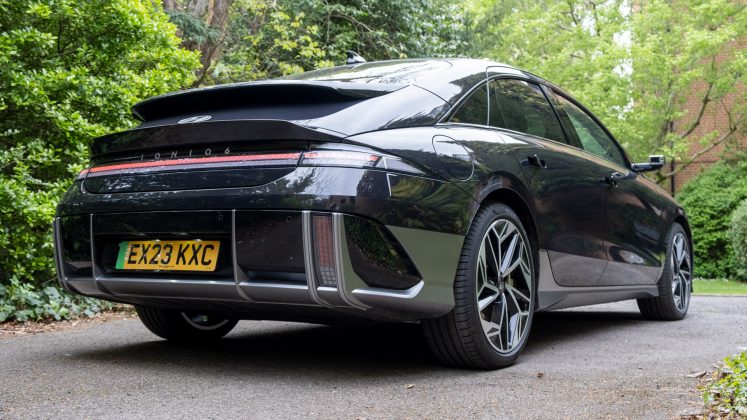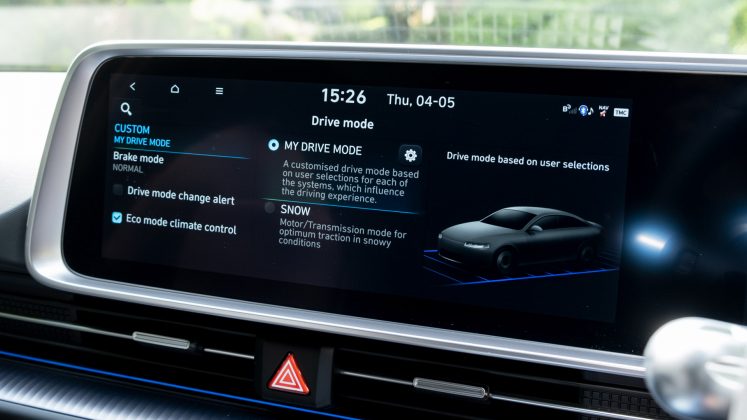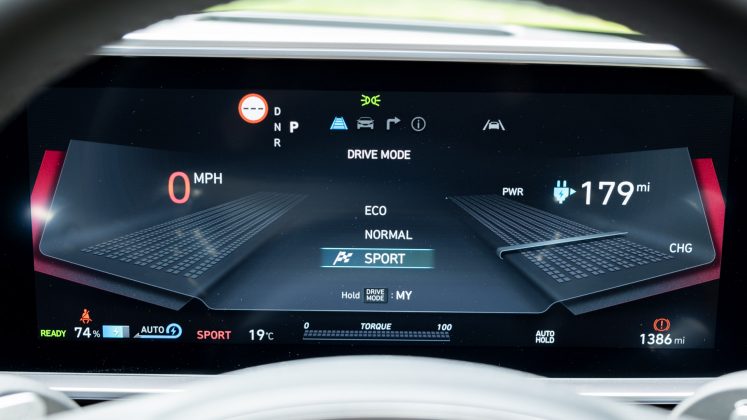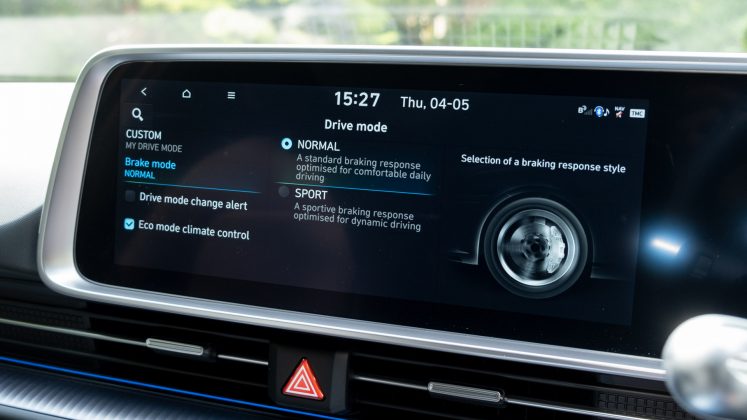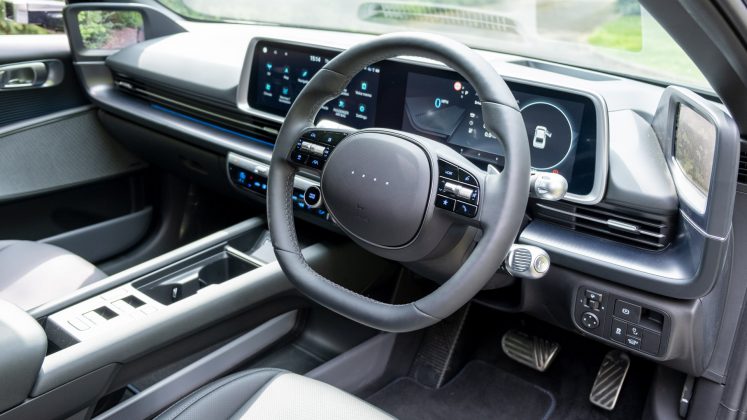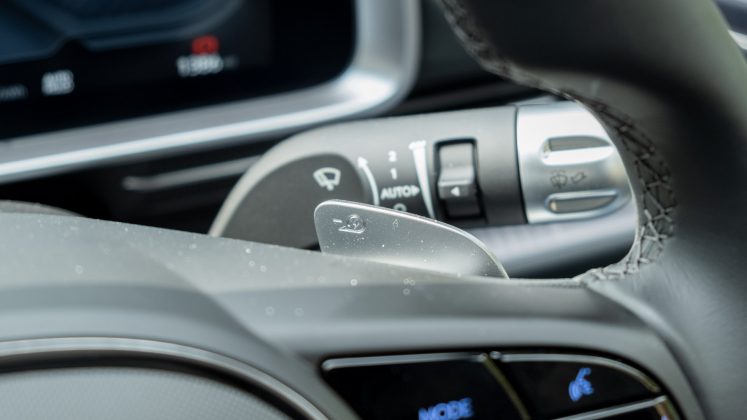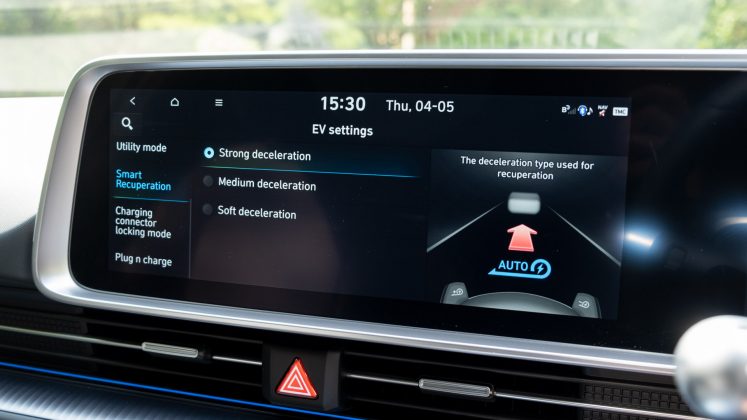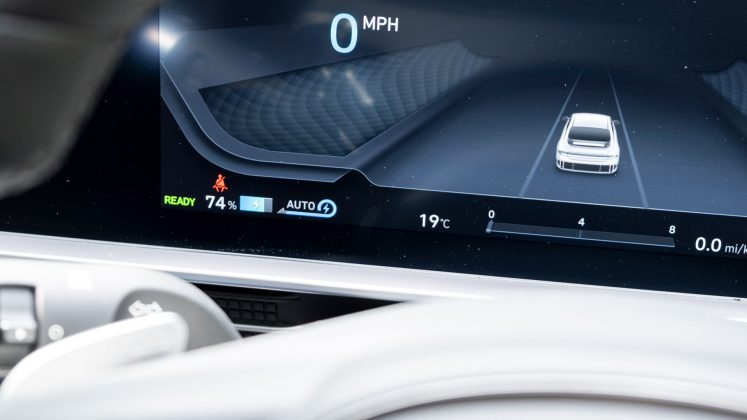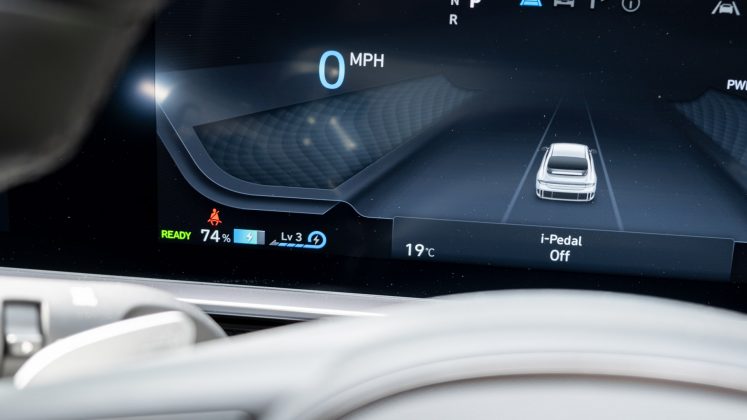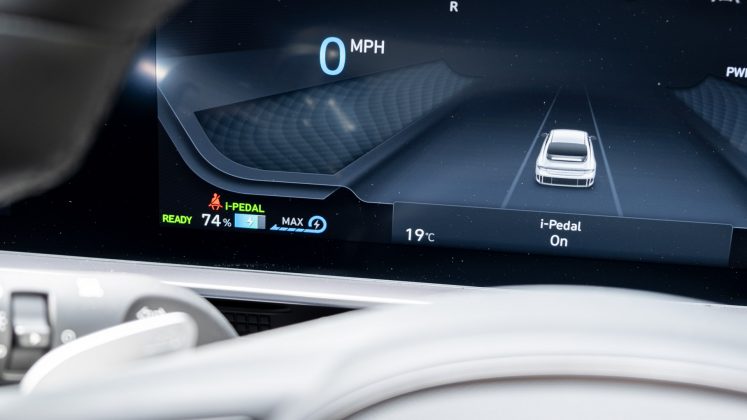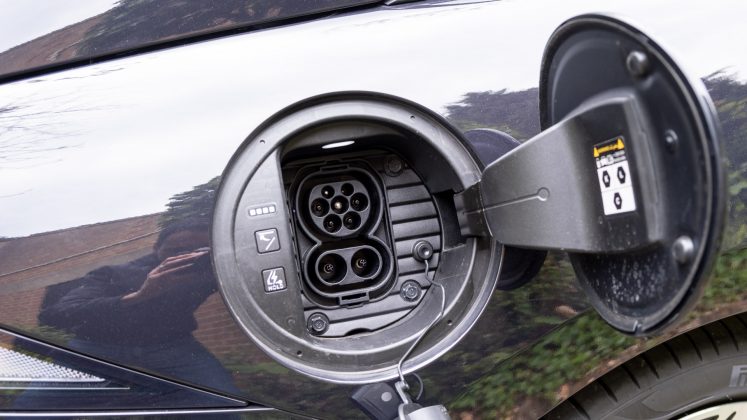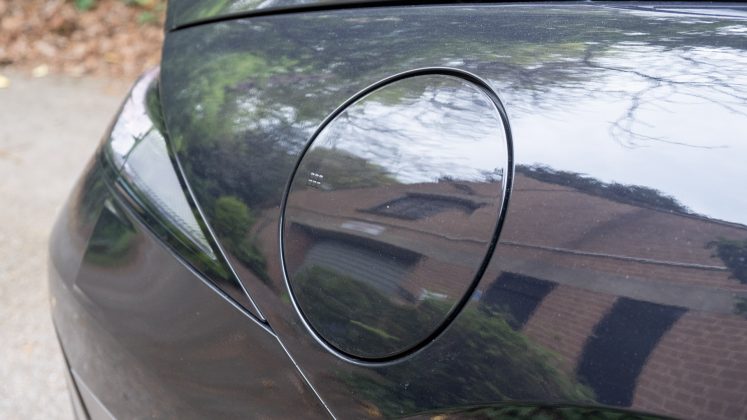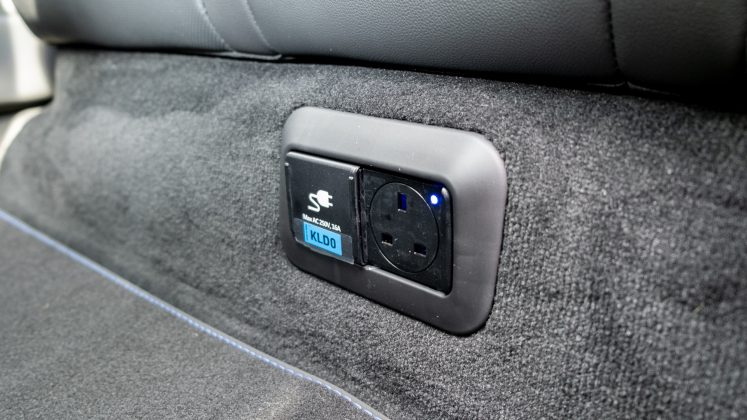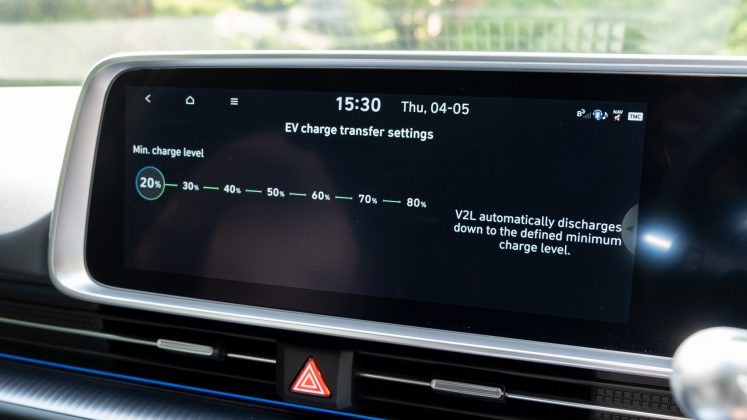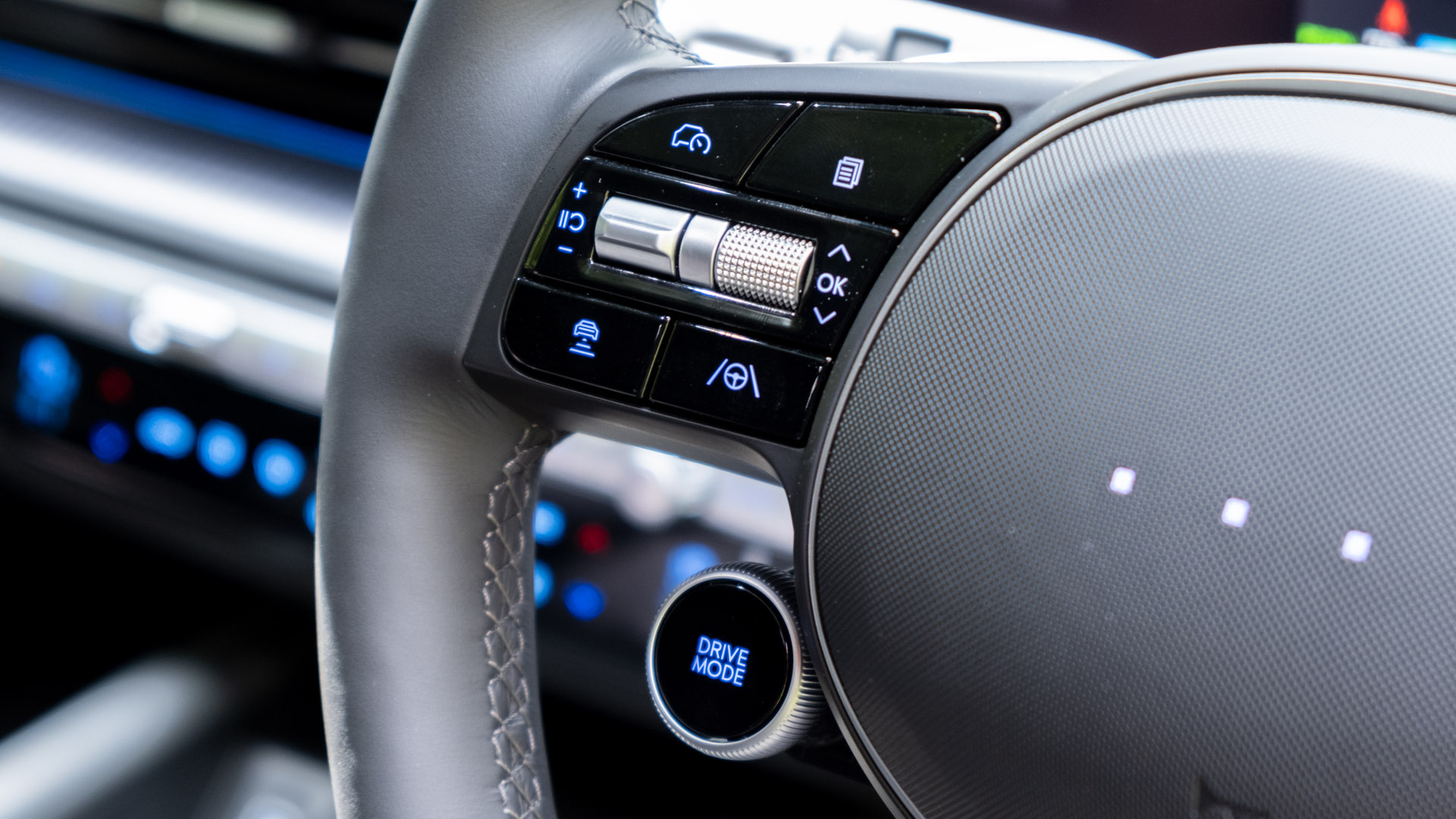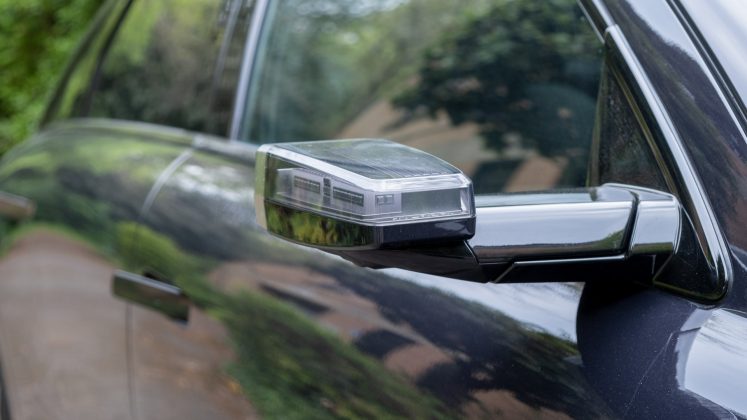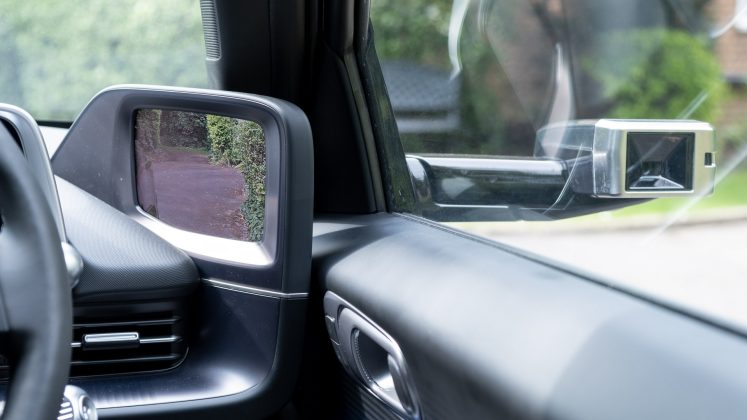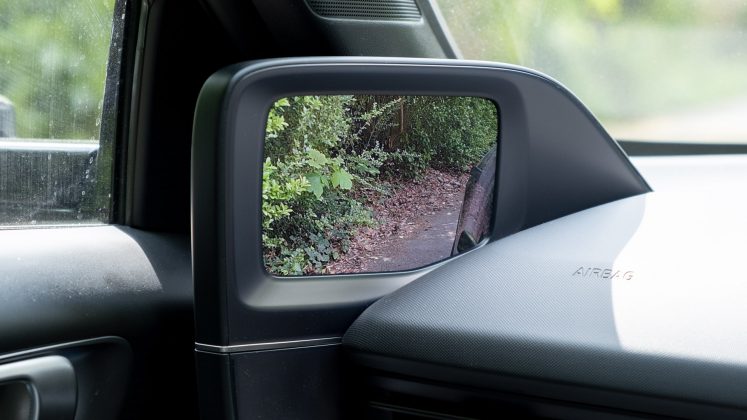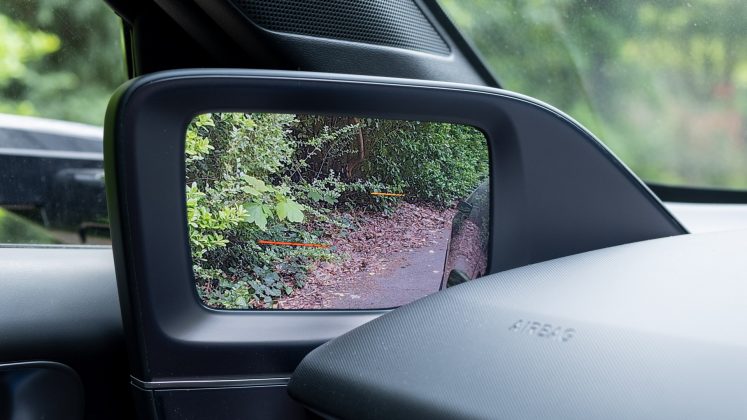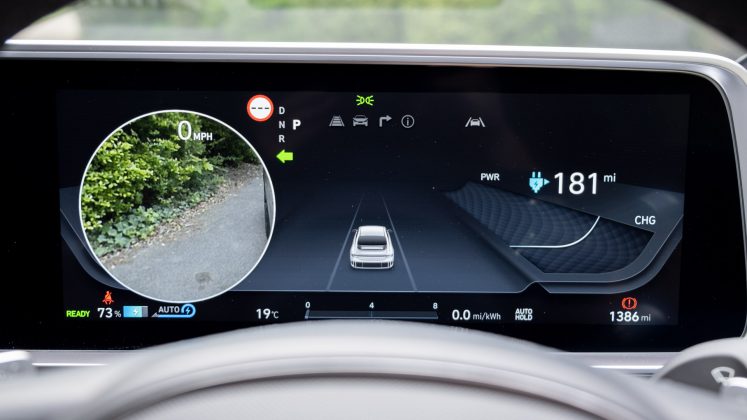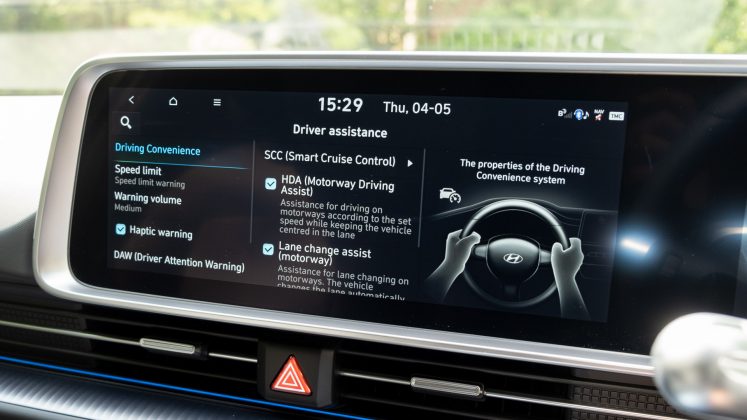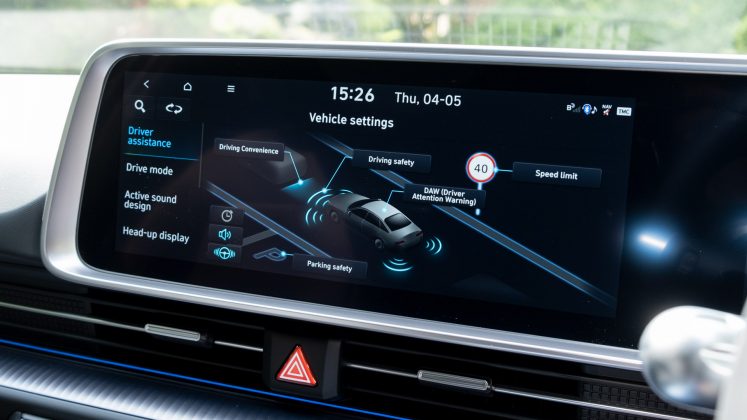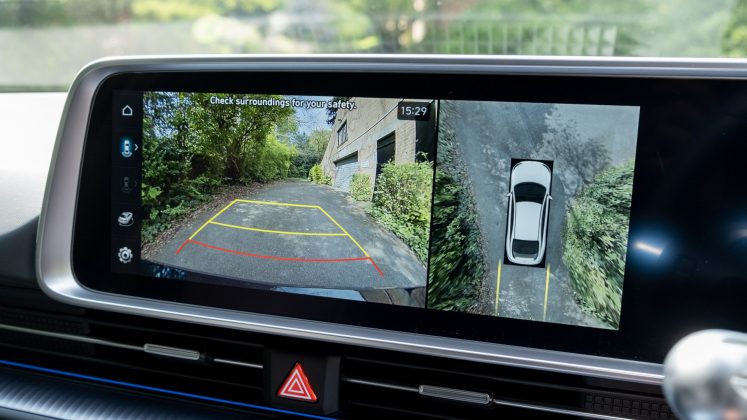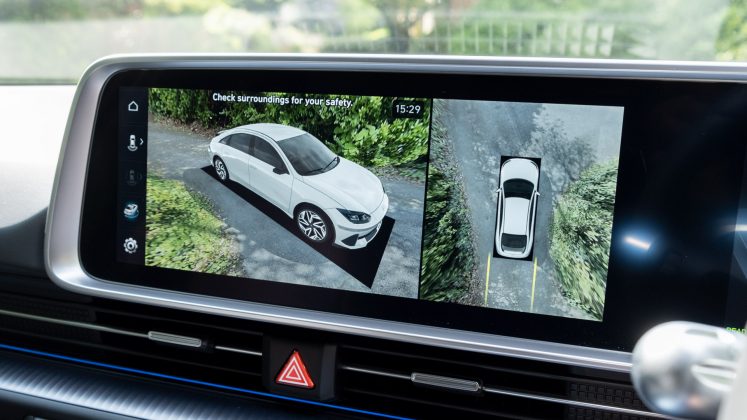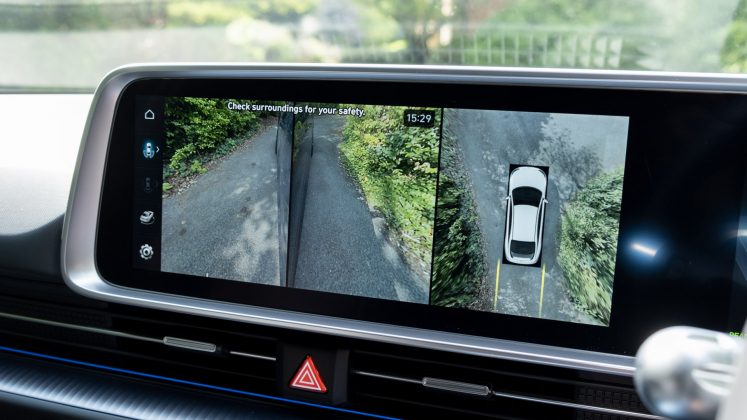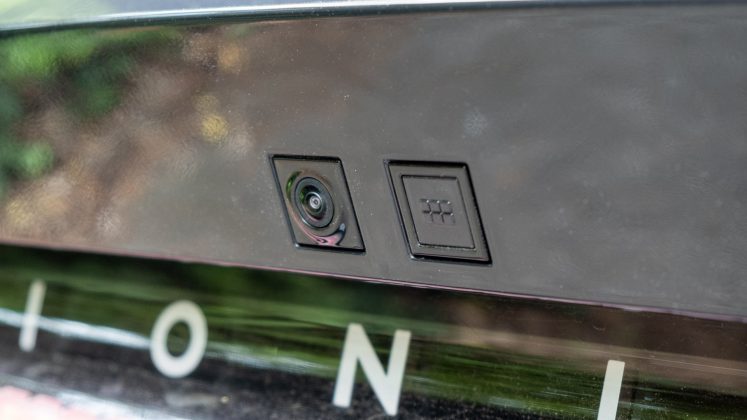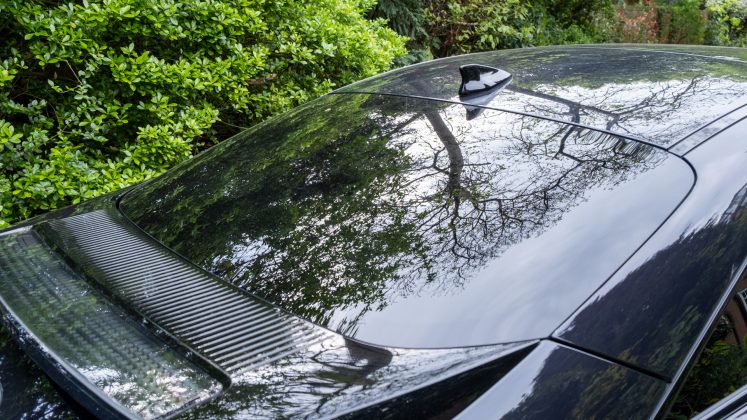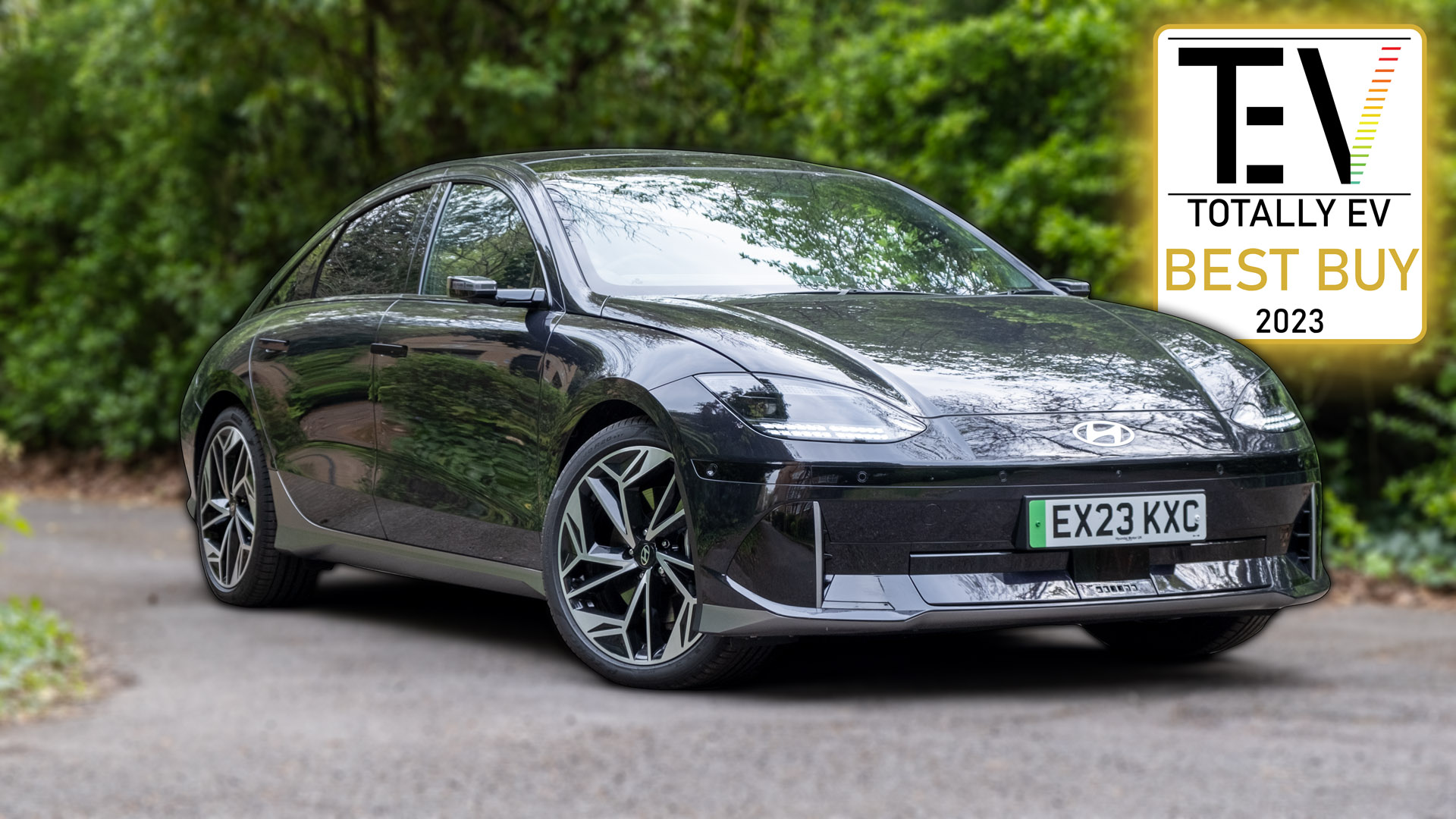Unveiled in 2022, the Hyundai Ioniq 6 is an all-electric saloon that takes aim at the Tesla Model 3, BMW i4, and Polestar 2. Its unique design is inspired by the Hyundai Prophecy, a concept car, which was presented in March 2020. It is the second vehicle to be released under the South Korean’s sub-brand and follows on from the manufacturer’s SUV-sized Ioniq 5.
If you’d prefer to watch a review of the Hyundai Ioniq 6, head on over to our YouTube channel.
Hyundai Ioniq 6 price & competition
At the time of writing and in the UK, the Ioniq 6 is available in two trims: Premium at £47,040 and Ultimate at £50,540. Both have the same 77.4 kWh battery pack and single-motor rear-wheel drive (RWD) configuration outputting 168 kW (225 hp) of power and 350 Nm of torque. Should you want to add a secondary motor onto the front axle to turn it into an all-wheel drive (AWD) vehicle, it’ll cost an additional £3,500. This will give you 239 kW (320 hp) of power and 605 Nm of torque instead.
Find the best Hyundai Ioniq 6 deals
A breakdown of the two trim levels can be found below (click to expand):
When it comes to its rivals, there are a fair few EVs to consider: the BMW i4 from £49,995; the Polestar 2 from £44,950; the Tesla Model 3 from £42,990; the Honda e from £37,395; the VW ID.3 from £37,115; Cupra Born from £36,475; Vauxhall Corsa-e from £33,930; the GWM Ora Funky Cat from £31,995; the Peugeot e-208 from £31,345; the Mini Electric from £31,000; the Renault Zoe from £29,995; the Nissan Leaf from £28,995; the Fiat 500 Electric from £28,195; and the MG4 EV from £26,995. There is also its sibling, the Ioniq 5 which starts from £43,445, which is considerably more than when we reviewed it in late 2021 at £36,995.
Read next: Cupra Born review: Better than the VW ID.3?
Hyundai Ioniq 6 exterior review
Much like its sibling, the Ioniq 6 really stands out over its competitors. Its unique design is a head-turner and reminds us of older Porsche vehicles. Indeed, from the front, it’s reminiscent of the Porsche 980 with its soft curves and seamless headlight design. At the side, it has an elongated silhouette with 20″ alloys that come fitted as standard, and door handles that conceal when locked and stick out when unlocked – making them more intuitive to use than the ones found on the Tesla Model 3. As for the rear, to us, it’s a cross between the Ioniq 5 with its blocky 8-bit taillight design and the sporty Audi e-tron GT with its multi-spoiler design.
For your colour finishes, it comes in Byte Blue Solid as standard, but you should want a matte or metallic finish instead, it’ll cost you between £665-885.
Aside from its gorgeous looks, the Ioniq 6 has purposefully been designed to be as efficient as possible. Here, its fish-like profile makes it among the most aerodynamic production cars in existence; it has a drag coefficient of just 0.21, bettering the likes of the Porsche Taycan (0.22) and Tesla Model 3 (0.23). While it doesn’t quite beat the Tesla Model S (0.208), Mercedes-Benz EQS (0.20) and Lucid Air (0.197), it’s still awe-inspiring, especially for a vehicle of its class. Just for reference, the Ioniq 5 is rated at 0.28cd – the lower the figure, the better the vehicle is at cutting through the air and maximising efficiency.
Reax next: Porsche Taycan Cross Turismo review: Best electric Porsche?
Hyundai Ioniq 6 interior review
Moving onto its interior design, it’s very sleek, with the Ultimate trim coming in either a black and white finish. The former is the only option available in the Premium trim. No matter which trim you choose, you’ll be pleased to know that the automaker has chosen to use an eco-process and recycled PET fabric when fabricating the leather seats, recycled ocean fishing waste for the floormats, bio-materials with extracts from natural sugar cane for the dashboard, and bio PET yarn for the headlining – showing that Hyundai has sustainability in mind with the production of the Ioniq 6.
Aside from this, there are interactive LED lights integrated into the dashboard and the steering wheel, which are used to display the drive mode, shift in reverse, voice recognition and EV recharging status. A small, yet clever integration by the South Korean manufacturer.
While that’s all very positive, one could argue that the choice of materials around the cabin isn’t as premium as some of its rivals – hard plastic resides around the dashboard, door frames and the centre console.
The automaker’s choice of having two 12.3″ displays sitting side-by-side also isn’t as intuitive as one might think – if the centre-weighted screen was angled towards the driver, it would have made for a more practical design, as in its current format, it’s a little hard to reach. Similarly, the use of touch-based climate controls without the use of haptic feedback seems like a missed trick. It’s a little fiddly to adjust the in-cabin temperature and fan speed while on the move. Nonetheless, it’s still better than some automakers’ decision to have all the settings solely available on the infotainment system.
On the plus side, a physical knob makes it easy to adjust the media volume and a flurry of physical buttons on the steering wheel means it’s easy to interact with the instrument cluster and adjust the vehicle’s settings. A Drive Mode button, which looks similar to that of the Porsche Taycan, also provides quick access to said settings.
Behind the steering wheel, there are two flappy paddles that allow the driver to adjust the regenerative braking level – we’ll hone into this feature further down in this review. Elsewhere, you’ll find a dedicated gear selector stalk, which makes for a very intuitive means of selecting Drive, Reverse, Neutral and Park.
Buy a car phone mount on Amazon (Affiliate)
Shifting our attention to the use of technology, the 12.3″ instrument cluster is vivid, comprehensively laid out and somewhat customisable. It’s a shame, however, that routing data from Android Auto and Apple CarPlay isn’t supported. Similarly, in the Ultimate trim, you’ll find the omission of this information on the Heads Up Display (HUD). The projected screen that appears on the driver’s side windshield is otherwise an excellent addition; it integrates artificial reality (AR) when one uses the system’s built-in navigation system and bolsters the vehicle’s safety credentials by showing key information, such as your current traversing speed and the safety systems in operation.
As for the main 12.3″ display, it’s very fluid, easy to navigate and offers a plethora of options to delve into. It also supports both aforementioned mobile operating systems over a wired connection only; at the time of writing, both aren’t supported wirelessly.
To get the best audio fidelity, we’d always recommend plugging in your smartphone. This leads us to the audio system and here, we think Hyundai has integrated four speakers in the Premium trim – there’s no concrete information about this on the web but we’ve based our assumptions on its sibling, the Ioniq 5. We’ve reached out to the manufacturer for further clarification and will update the review as soon as we hear back.
What we can confirm, however, is that the Ultimate trim brings offers an eight-speaker Bose sound system, which includes a subwoofer. If you’d like to hear how it sounds, watch our detailed review on YouTube.
Hyundai Ioniq 6 storage review
In terms of storage within the cabin, the Ioniq 6 is surprisingly spacious. While it doesn’t quite offer the openness of the Ioniq 5, due to its more traditional centre console design, it’s still roomy.
At the front, the glove box pulls out to reveal a sizeable area – a novelty as it doesn’t drop down like most. At the top of the centre console, there’s a Qi wireless charging pad, which resides next to a USB Type-A port used to connect to the infotainment system. Further down, there are two cupholders, a small bay to place your remote and a reasonably-sized storage area under the armrest; here, you’ll also find two USB Type-C ports for charging and a further two at the rear of the centre console.
Better still, under the centre console, there’s a large open area that will allow you to store a small rucksack or a handbag. A 12V socket is also provided here, making it useful to plug in a dash cam.
However, the door bins both at the front and rear of the cabin are a little slender. Still, they will still accommodate a reusable 500ml bottle. As for the rear of the cabin, there’s a plug-down armrest which reveals two cupholders.
Find the best Hyundai Ioniq 6 deals
As for its boot, there’s 401 litres with the seats in place. The manufacturer hasn’t provided a total figure with the seats down, however, we suspect it hovers at around 1,100-1,300 litres. Unsurprisingly, it doesn’t match up to the larger Ioniq 5 which offers 520 and 1,587 litres, respectively.
Here’s how it stacks up to its rivals: BMW i4 (470/1,290 litres); Nissan Leaf (435/1,161 litres); Tesla Model 3 (425/1,235 litres); VW ID.3/Cupra Born (385/1,267 litres); Polestar 2 (405/1,095 litres); Renault Zoe (338/1,225 litres); MG4 EV (363/1,177 litres); Peugeot e-208 (311/1,106 litres); Vauxhall Corsa-e (267/1,076 litres); GWM Ora Funky Cat (228/858 litres); Mini Electric (211/731); Honda e (171/571 litres); Fiat 500 Electric (185/550 litres); Smart EQ Fortwo (260/360 litres).
At the front of the Ioniq 6, there’s also a frunk. In the RWD models, it sits at 45 litres, while in the AWD models, such as the one we have on review, it’s smaller at 14.5 litres. The latter will still accommodate your charging cables, but it’s worth noting that this compartment is not electronically operated. Thereby making it a little less convenient if you’re accessing it on a day-to-day basis.
Speaking of which, there is an underfloor compartment under the boot floor which can make it more practical to store your charging cable. You could even remove the polystyrene section to reveal an even larger space, but we suspect most will prefer to have the tyre repair kit over a slightly bigger area.
In terms of convenience, an electric tailgate is standard on both trim levels. However, the boot opening hasn’t got that hatchback design, which might put off a few consumers. Equally, there’s only 60:40 rear-split folding seats with no through-loading capacity. To drop the rear seats, you’ll need to pull on the release lever located in the boot. When put down, you’ll notice that the middle seatbelt remains intact and that there is a small hump near the seats, meaning there isn’t a flat boot floor and that it isn’t as convenient as some of its competitors.
Read next: Tesla Model 3 review: Should you buy into the hype?
Hyundai Ioniq 6 comfort review
The amount of storage space in the Ioniq 6 isn’t too shabby, however, it’s certainly no competition with its sibling. The same could be said about headroom at the rear of the cabin; 6-foot 2-inches (188cm) individuals might just about squeeze in without discomfort, but in the larger Ioniq 5 those who are even taller won’t have a problem. Indeed, the saloon isn’t as roomy as larger SUVs, but the same could be said about the other vehicle in its class, such as the Polestar 2 and BMW i4 – note, the Tesla Model 3 is a little more accommodating than its main rivals.
Still, in comparison to the Polestar and BMW, the Hyundai is our favourite as the rear footwell design is completely flat. This allows for the rear middle occupant to be sat without discomfort. Speaking of which, the rear seats are at a slight angle and therefore might lead to a bit of strain on the quad muscles. With that said, the seats themselves are all accommodating and soft, and with ample legroom at the front and rear of the cabin, it should be a non-issue for most.
It’s also great to see that as standard, there are 8-way heated electric front seats with lumbar support, heated rear outer seats and a heated steering wheel. The Ultimate trim adds ventilated relaxation front seats with a driver memory function. Speaking of which, the top-spec trim also comes with a sunroof, which brings in a lot of natural light into the cabin; of course, there’s a retractable sunshade should things get a bit toasty.
As for cabin noise, the Ioniq 6 does an excellent job of suppressing exterior sounds, in fact, it’s among the best in its class. Wind noise can barely be heard, which in part, is thanks to the vehicle’s excellent aerodynamics. It’s also serene at lower speeds. However, at higher speeds, one might still be able to hear a bit of road noise due to the slightly larger-than-normal 20″ wheels (245/40R20 from Pirelli).
Read next: BMW i4 review: Is the i4 eDrive40 better than the i4 M50?
Hyundai Ioniq 6 performance review
Another important factor when it comes to the overall comfort of a vehicle is its suspension system. In this department, the Ioniq 6 is well-versed in dealing with speed bumps and potholes at slower and higher speeds. Hyundai’s setup is on par with the Polestar 2 (without Performance Pack) and better than the Tesla Model 3. However, due to the omission of an adaptive system, it doesn’t match up to the BMW i4, which has the option of having it fitted.
Similarly, it cannot compete with the BMW when it comes to the overall driver’s feel. Here, the Ioniq 6 feels a little disjointed even in its Sport mode driving preset. With that said, you’ll still feel planted to the ground when cornering at speed due to the vehicle’s lowered centre of gravity. It also incites confidence and grips the road better than the Tesla when ragged around winding roads.
Equally, the Ioniq 6 is a breeze when driving on the motorway. Due to its sleek aerodynamics and drag coefficient of 0.21, it cuts through air unlike anything we’ve ever experienced – that includes the Porsche Taycan Turbo. The only analogy we can give is that it’s like using a hot blade to slice through butter; the Hyundai gives an unbelievable feeling of unison with the road and all the air that swirls past it, which isn’t the same that could be said about the more blocky Ioniq 5. Indeed, it’s a magnificent feeling, however, its limited top speed of 115 mph will come as a disappointment to those who frequent unrestricted roads.
Buy a car phone mount on Amazon (Affiliate)
On the subject of going fast, the AWD Ioniq 6 has two electric motors. The front provides 74 kW (99 hp) of power, while the rear 165 kW (221 hp) of power; combined they output 239 kW (320 hp) and 605 Nm of torque – the RWD model outputs 168 kW (225 hp) and 350 Nm of torque instead.
Using Racelogic’s Performance Box Touch we recorded a 0-20mph time of 1.43 seconds, 0-30mph in 2.06 seconds, 0-60mph in 4.9 seconds and 50-70mph in 2.53 seconds. Granted, these times won’t compete with some of its rivals, but they should suffice for the vast majority of consumers.
Intriguingly, you are also able to permanently disengage the AWD system and opt for an RWD system instead. This, to us, is the first time we’ve seen it on a consumer vehicle. To achieve this you’ll need to assign the RWD option to the My Drive mode on the infotainment system. In said driving mode, we had the ‘RWD’ model tested at 0-20mph in 2.29 seconds, 0-30mph in 3.4 seconds, 0-60mph in 7.52 seconds and 50-70mph in 3.63 seconds.
Now you might be wondering: why on earth would I want to use the RWD option on an AWD-capable vehicle? Quite simply: to maximise range and double-down on efficiency, especially on the motorway.
This perfectly leads us to its electric range. As standard across both trim levels, the Ioniq 6 comes fitted with a heat pump; something that couldn’t be said about some of its rivals. This gives the manufacturer the confidence to quote a 322-339-mile range on the WLTP test cycle. However, from our own mixed driving tests, we netted 250-270 miles, which is still a very respectable figure.
To put that figure into context, the AWD BMW i4 M50 netted 200-210 miles, while the AWD heat-pump-less Polestar 2 managed just 200 miles. On the latter model, you should expect around 240-250 miles with a heat pump installed. It’s only the AWD Tesla Model 3 Long Range that beats it with a class-leading figure of 310 miles.
Elsewhere, the FWD Polestar 2 achieved 250-270 miles, the RWD BMW i4 eDrive40 240-260 miles, the entry-level RWD Tesla Model 3 230-250 miles, the MG4 EV 220-240 miles, the VW ID.3 230 miles, the Cupra Born 210-220 miles, the Nissan Leaf Tekna e+ and Renault Zoe R135 both manage 200 miles, the Peugeot e-208 180 miles, the Fiat 500 Electric and GWM Ora Funky Cat 140-160 miles, the Vauxhall Corsa-e 130-140 miles, the Mini Electric 100-110 miles, and the Honda e a measly 80-90 miles.
Now in order to be as efficient as possible, you’ll want to recoup energy back into the battery pack using regenerative braking. Here, there are numerous modes to choose from by either using the flappy paddles behind the steering wheel to select between Level 0, 1, 2, 3 or relying on ‘Auto mode’ that can be tailored to your liking via the infotainment system; you can select from Low, Medium or Strong to let the vehicle dynamically adjust the level of regenerative braking.
The best out of the bunch, at least for us, is i-Pedal mode, which allows for one-pedal driving. Unlike the Kia e-Niro, the Kia Soul EV and the Hyundai Kona Electric you can bring the vehicle to a complete standstill by simply lifting your foot off the accelerator pedal, rather than having to hold the left flappy paddle while on Auto mode. This makes inner-city driving a breeze and certainly one-ups its competitors that don’t offer the same level of customisation.
However, unlike the Polestar 2 and Tesla Model 3, which retain said mode on a cold start, the Hyundai Ioniq 6 requires you to re-enable i-Pedal mode every time you step inside the cabin, even if it was the last-used mode. Rather odd behaviour and a similar observation that we had of the Hyundai Ioniq 5, Kia EV6 and Kia Niro EV.
Aside from recouping energy while on the move, you can also plug in the vehicle. Thanks to its 800-volt architecture, the Korean automaker supports up to 220 kW of input via the CCS charging port. This allows you to go from 10-80% charge in roughly 18 minutes. Opt for a more commonly found 50 kW input and it’ll take 1 hour 13 minutes, instead.
For home or workplace chargers, the Ioniq 6 has a 10.5 kW onboard charger and a Type 2 port, which means using a three-phase charger it’ll take 7 hours and 10 minutes from empty to full, while a single-phase 7 kW charger will take 11 hours and 45 minutes. A 3-pin input will take in excess of 30 hours. On another note, the charging port is electronically released and closed, giving it that extra notch of class over its main rivals – it’s not quite as snazzy as the one found in the Audi e-tron GT or Porsche Taycan, as it cannot be controlled from within the cabin but nonetheless, the mechanised control is a neat touch.
There’s also Vehicle-to-Load (V2L) technology. This means you can power a regular household appliance such as a kettle or charge a laptop via the 3-pin socket found below the rear middle seat. Via an optional adapter, you can even charge another EV using the vehicle’s Type 2 port.
It’s just worth being mindful that the maximum power output is rated at 3.6 kW/220 Volts. As such, it’ll take an excruciatingly long time to charge another vehicle but does serve its purpose if you’re camping. You can see it in action on the Kia EV6 by heading to our YouTube channel, Instagram feed or TikTok page.
Hyundai Ioniq 6 safety review
When it comes to safety, the Ioniq 6 scored 5/5 stars in Euro NCAP’s rigorous crash tests; it managed a stonking 97% and 87% in the Adult and Child Occupancy tests, respectively. It also scored 90% in Safety Assist, and it’s immediately apparent with the plethora of driver assistance systems that come fitted as standard: Smart Cruise Control (SCC) with Stop & Go; FCA – Forward Collision Avoidance Assist – Car, Pedestrian, Cycle; FCA-JT – Forward Collision Avoidance Assist – Junction Turning; Intelligent Speed Limit Assist (ISLA); Lane Follow Assist (LFA); Lane Keep Assist (LKA) – Line and Road Edge; Blind Spot Collision Avoidance Assist (BCA); and HDA – Highway Drive Assist Level 2.
Note, lane-keeping assist gets enabled each time you turn on the vehicle but thankfully can easily be disabled by long-pressing a button on the steering wheel. By comparison, in other vehicles, one has to faff around with the infotainment system, which in itself, is a safety hazard.
As for HDA, it’s a great addition as it provides steering support among other things on the motorway – a feature that a lot of its competitors charge extra for, even in their top-spec configurations. As for SCC, it works a treat by perfectly regulating the distance to the leading car and with Stop & Go technology, takes the effort away when traffic accumulates.
To further bolster the experience, there’s the Blind Spot View Monitor (BSVM) fitted as standard in the Ultimate trim. This integrates the side-view cameras into the instrument cluster when you’re indicating, giving you a real-time view of your surroundings. An excellent addition and one that we have seen present on other modern vehicles from the Hyundai Group.
It is the first time, however, that we’ve seen a Hyundai vehicle featuring Digital Side Mirrors (DSM). The £995 option, which is solely available in the Ultimate trim, replaces traditional mirrors for more aerodynamically-efficient cameras. Images from your surroundings are then permanently displayed inside the cabin and can even integrate safety lines when indicating.
In many ways, it’s safer than traditional mirrors as you’ve got tech implementation that complements your views, and with the positioning of the screens inside the cabin, you effectively have to turn your head at a lesser angle to check your surroundings. It’s worth noting that at night, it’s no brighter or dimmer than traditional mirrors; the cameras are of a high resolution and therefore provide excellent visibility.
In the top-spec trim of the Ioniq 6, you’ve also got Parking Collision Avoidance Assist-Reverse and Forward (PCA-R/F), a useful tool when you’re in the car park. Both trims feature Rear Cross Traffic Collision Avoidance Assist (RCCA) as standard, which gives you a warning of oncoming traffic while reversing out of a space.
Speaking of parking, the Ioniq 6 has front and rear sensors and a rearview camera that come as standard. Surround View Monitor and Remote Smart Parking Assist are available in the Ultimate trim only – the former gives you a 350-degree view of the vehicle, while the former provides automated parking assistance from within the cabin or from afar while using the remote; it’s not as fast as a human, but nonetheless a useful tool.
As for visibility, the Ioniq 6 is excellent at the front and sides, with the A-pillars also slender, making it easy to peer around corners, unlike the chunky ones found on the Tesla Model 3. Rearview visibility is a little limited, but with the inclusion of the sensors and camera, it should be a non-issue.
Read next: Polestar 2 review: The all-electric muscle car
TotallyEV’s verdict on the Hyundai Ioniq 6
While the Hyundai Ioniq 6 isn’t as efficient as the Tesla Model 3 nor does it provide the same driving dynamics as the BMW i4, it’s still a fabulous electric vehicle which is competitively priced.
Find the best Hyundai Ioniq 6 deals
It’s sleek and stylish, plenty fast, has a functional interior design, offers a great range of features and is comfortable to drive. Ultimately, it’s an excellent all-rounder and one that we can actively see ourselves recommending over its competitors. As such, it receives TotallyEV’s Best Buy award.
Would you pick the Hyundai Ioniq 6 over the Tesla, BMW and Polestar? Let us know in the comments section below or via social media; we’re on: YouTube, Instagram, Facebook, Twitter and LinkedIn.

